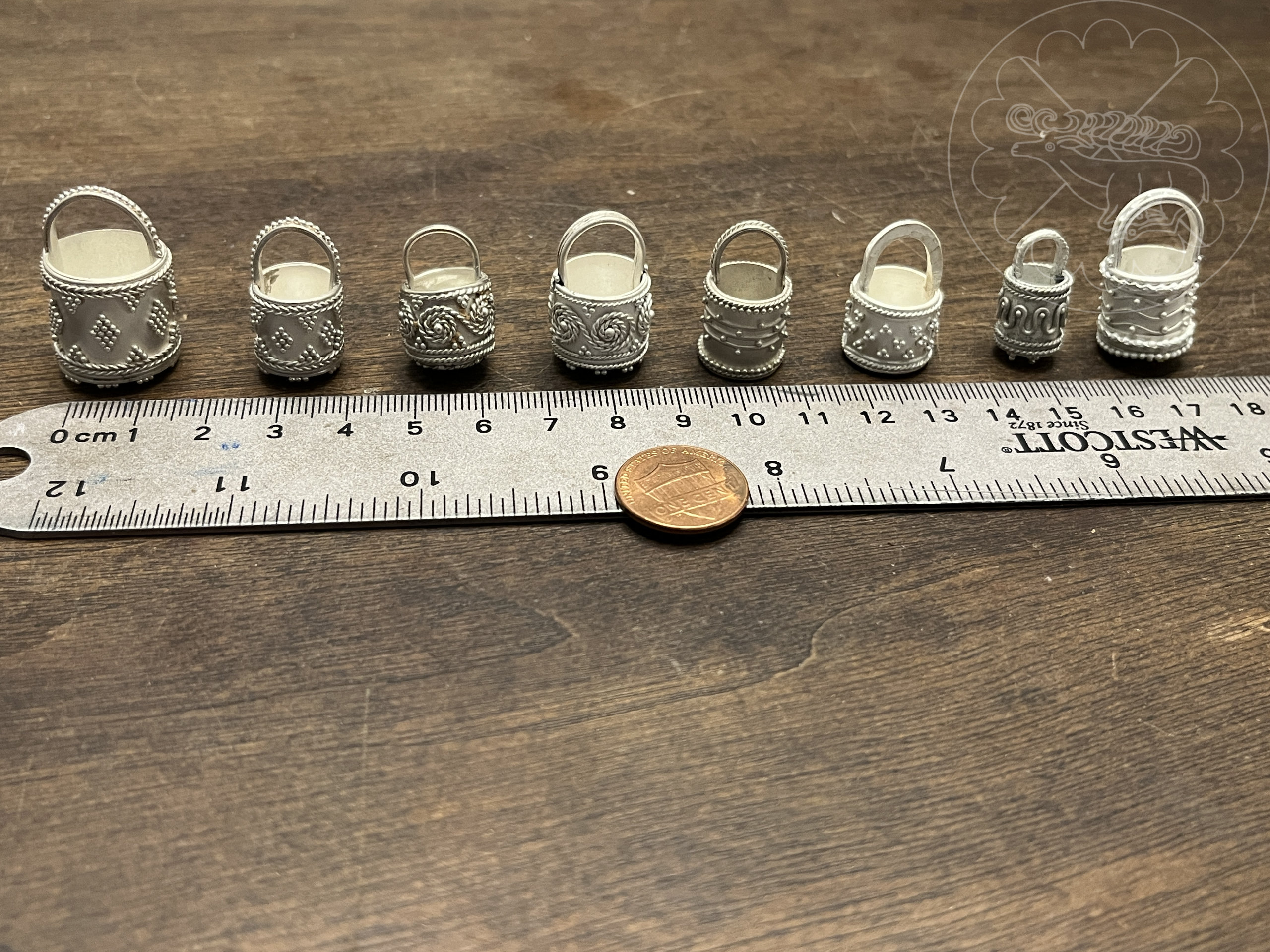
I ran across some objects on auction sites (worthpoint.com, invaluable.com, drouot.com & others) labelled variously as Viking Bucket Pendant, Scandinavian Pre-Viking Bucket Pendant, Anglo-Saxon / Viking Filigree Bucket Pendant, Pre-Viking Filigree Aroma Bucket Pendant, or Bucket Pendant from the Pagan Anglo-Saxon and Viking Times. There is a wide variety of different information regarding their time and origin on the various auction sites, ranging in time from 4th-7th century AD to 6th to 11th century AD. The descriptions were equally vague in their details:
Like many objects from this time period, it is difficult to place this into a specific culture because there was so much movement of goods between different groups. For example, almost identical gold items have been found in the Hoen hoard, Norway’s largest find of Viking gold, but the hoard contained items from the Franks, Romans, Byzantines, Anglo-Saxons, and the Arabic world. Bronze examples of these miniature situlae have been found in hoards in Vimose bog, Denmark, and Driffield, Yorkshire, England. Researchers have theorized that they represent large wooden buckets used in the world of the Franks, Anglo-Saxons, and Vikings to hold mead or ale. Those buckets were used to replenish individual drinks during feasts. These small pendants were probably symbolic of that activity, representing endless abundance
I haven’t been able to find any examples from the Hoen hoard, and as such, can’t speak very well to the veracity of the description.
I found many more examples of the pendants on a Russian language thread on swordmaster.org on Jewelry and Antiquities (Ювелирные изделия и предметы искусства древности) where they seem to be referred to as “aroma buckets”.
I’ve found some scholarly information on them, Much of what I’ve found comes from a Romanian archaeologist named Vitalie Bârcă who seems to focus on local examples which are fairly early (from 1st century on). They did range broadly geographically:
Bucket-shaped pendants were broadly diffused in various cultural environments from the area comprised between the north-east of the Black Sea and Central Europe
Bârcă, V. (2021). Bucket-shaped pendants from the Sarmatae environment. A few notes on the origin, dating and use of these amulets in the Barbarian world. Cercetări Arheologice, 28(2), 411-438.
They have been mentioned in Sarmatian and Chernyakhov cultures, though finds have also been mentioned in Ukraine, Scandinavia (Khrapunov, I., & Stylegar, F. A. (Eds.). (2011). Inter Ambo Maria: contacts between Scandinavia and the Crimea in the Roman Period: collected papers: tezisy dokladov. Dolya Publishing House) and the British Isles (Meaney, A. L. (1981). Anglo-Saxon amulets and curing stones (Vol. 96). Archaeopress Archaeology)
As for their wear and use:
These were objects usually worn in necklaces around the neck or by the wrist together with other pendants, beads and amulets, being part of collars or bracelets. This is confirmed by the fact that in many graves, including from the Sarmatian milieu, they were found in the neck area of the dead. Nevertheless, one should mention that in some cases they were hung by the belt/strap, which is also validated by the find of bucket-shaped pendants in the pelvis or thigh area
Bârcă, V. (2018). Notes on the use, dating and origin of the bucket-shaped pendants from the Sarmatian environment of the Great Hungarian Plain. Journal of Ancient History and Archaeology, 5(2), 37-63.
It was concluded based on these aspects that the role of the bucket pendants was to store various medical organic protective remedies (mineral, vegetal, animal), and since they could be opened, such substances could be replaced according to necessity.
Since occasionally, bucket-shaped pendants were discovered together with items of a cult-magical function, it was concluded these may be deemed amulet-pendants fulfilling an apotropaic role. Also, it is believed that inside the buckets, various incantations were preserved (spells)
Bârcă, V. (2021)
In any case, I’m still searching for more information about their origins and uses and will update if/when I find more.
The pendants were made of gold or silver, or occasionally bronze and even iron. I found the shapes and designs very intriguing and searched and found more and more of them in various places and decided that I wanted to try to make one. Granulation and filigree techniques were used in their manufacture. I’ve made 9 so far, all from argentium silver. The barrel of the bucket is started flat with the granules and filigree applied. Then the barrel is bent to a round shape before attaching the bottom and handle.
Here’s a selection of photos of the 10 so far.
#1
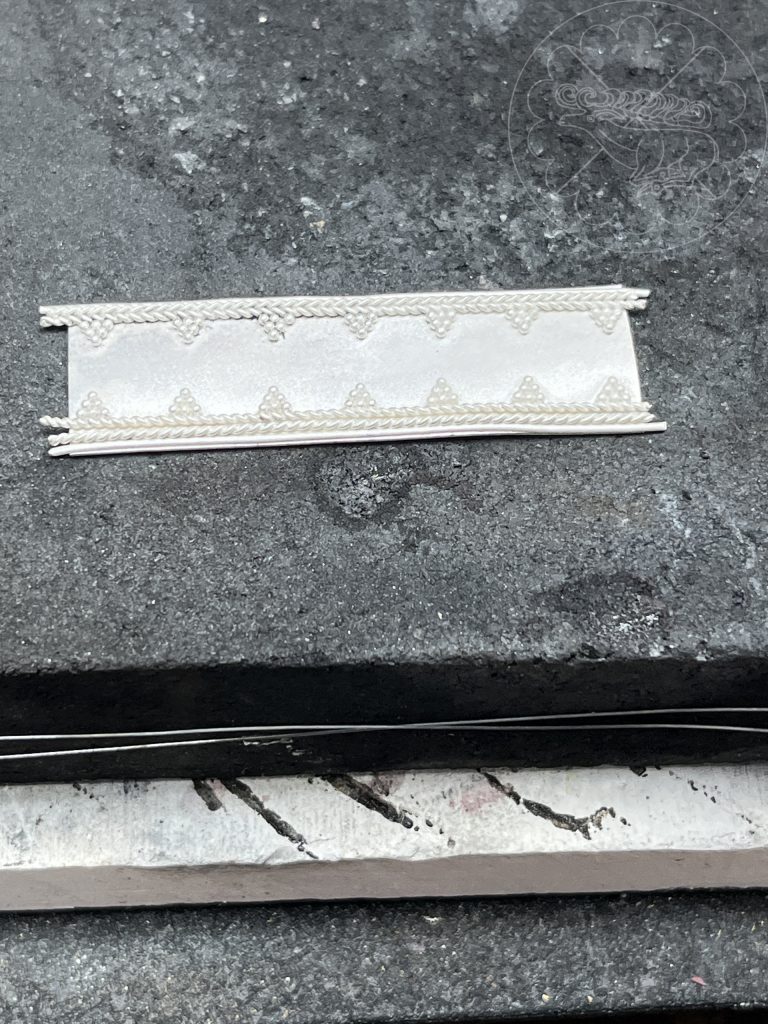
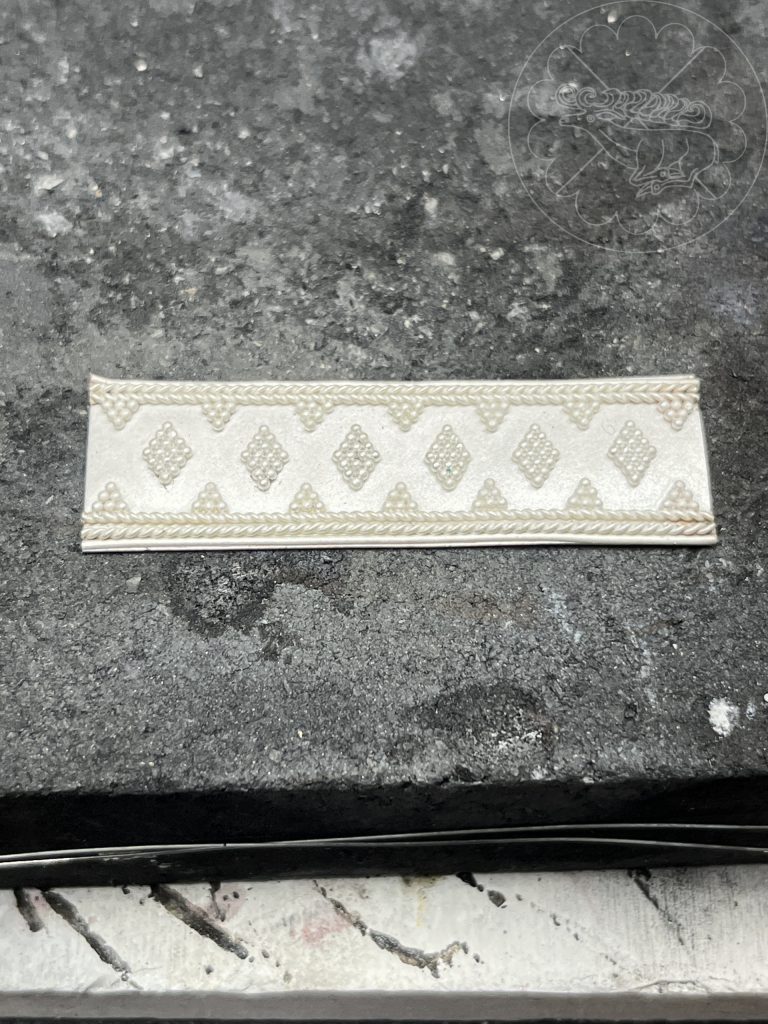
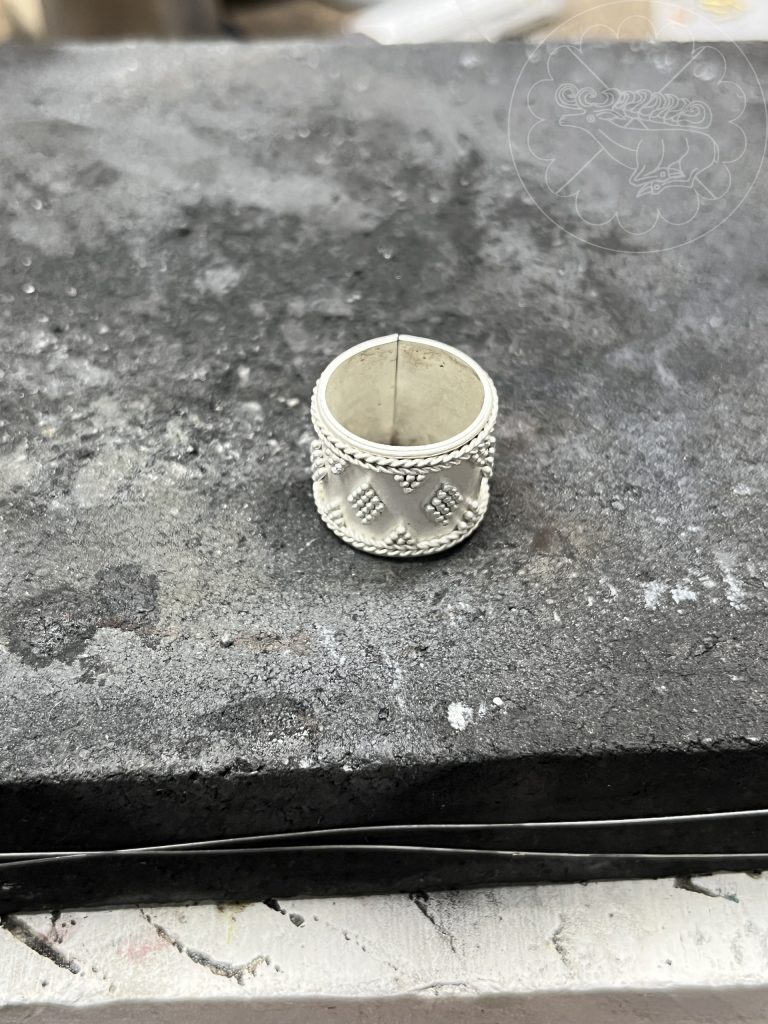
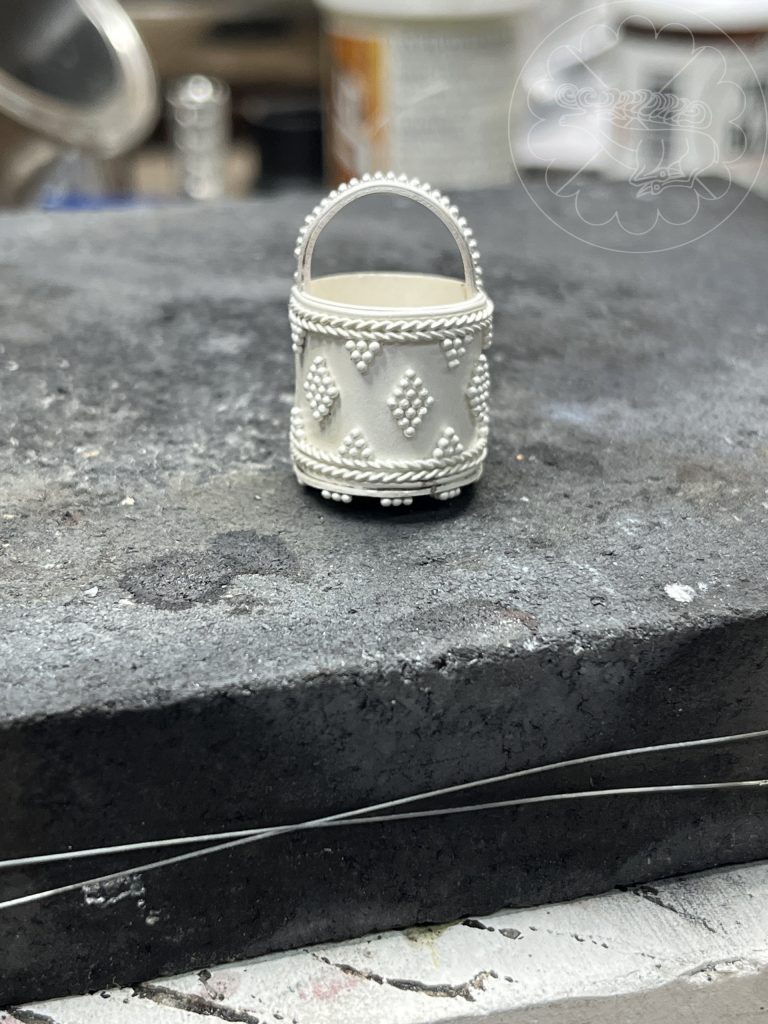
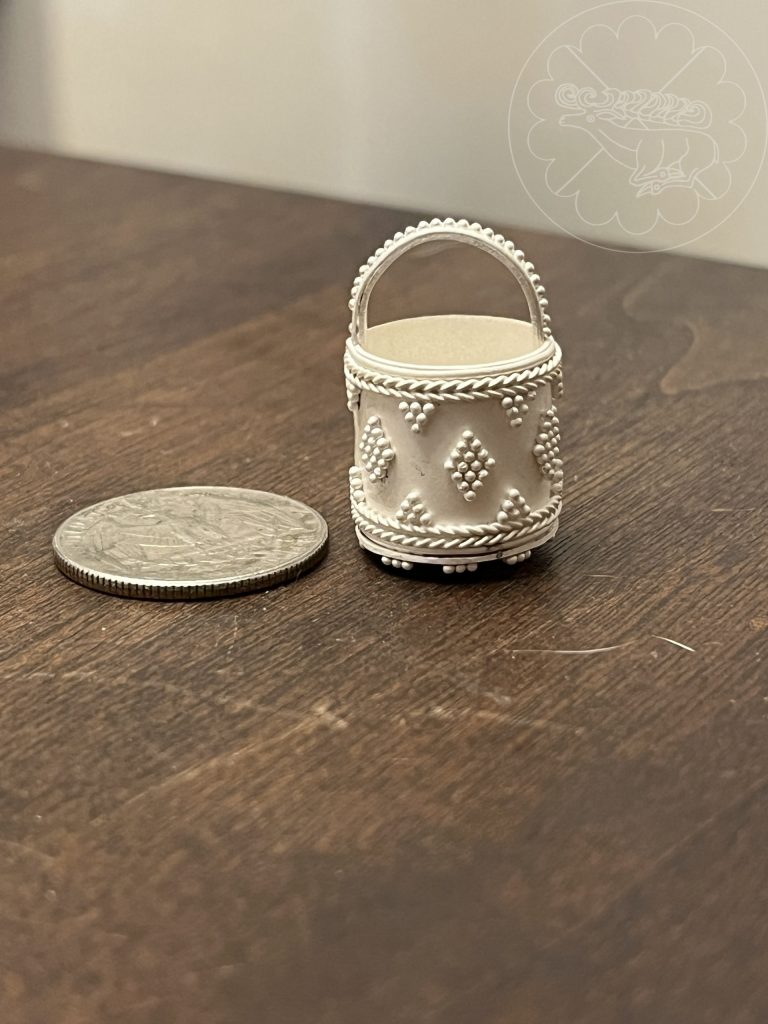
#2
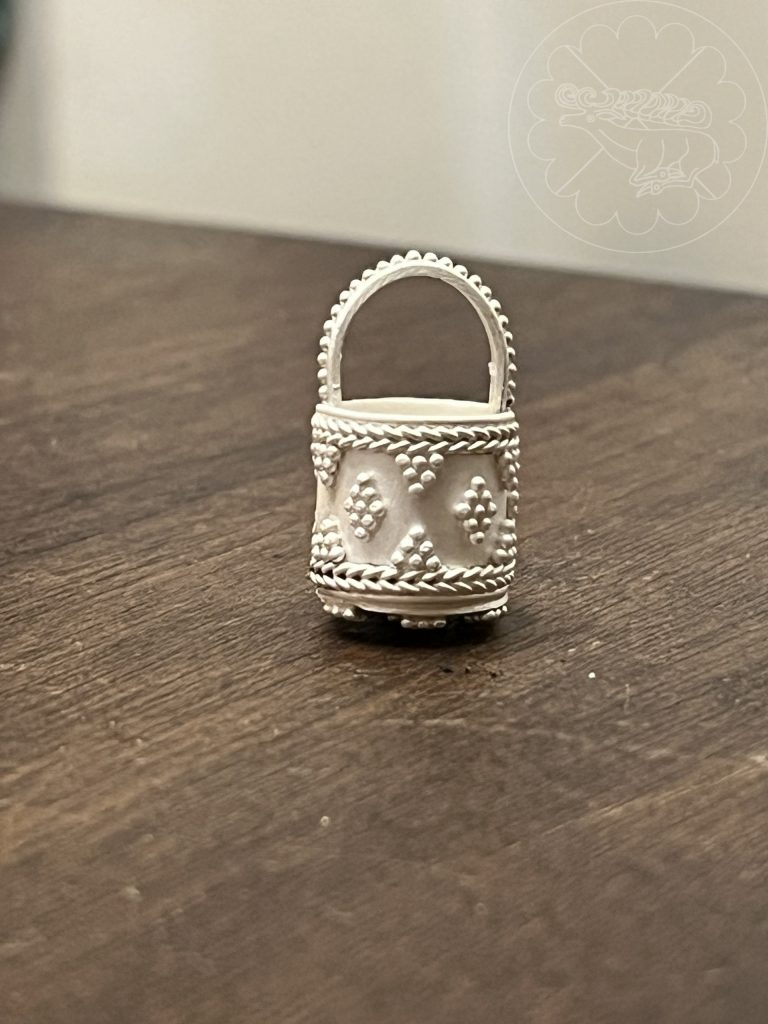
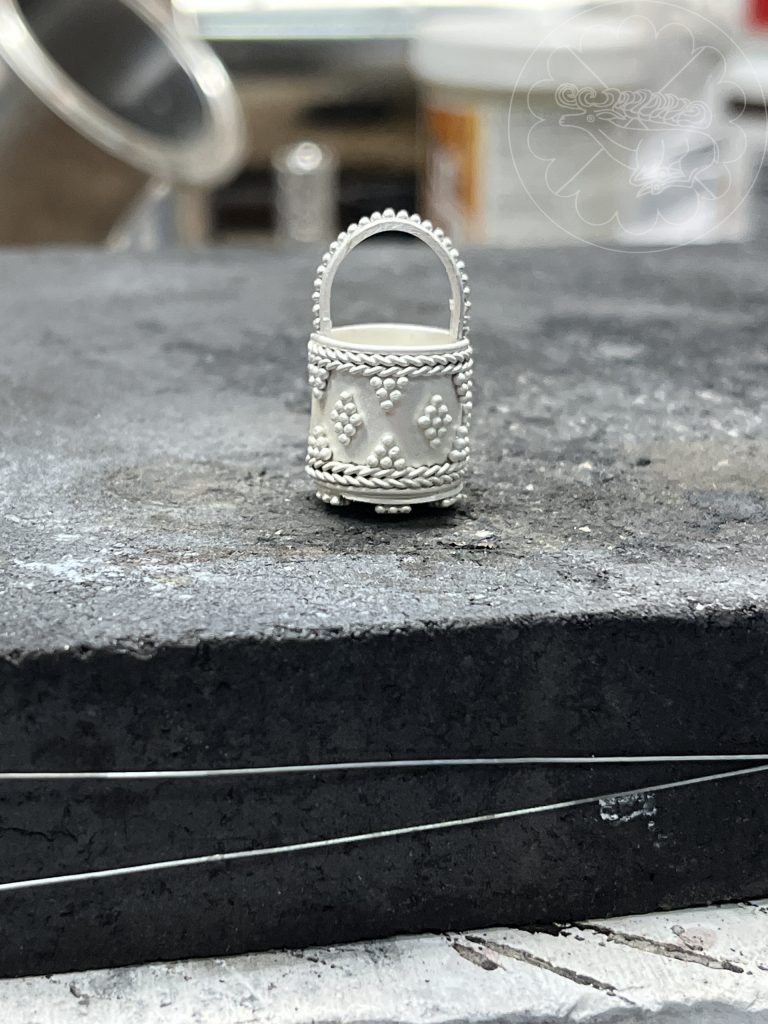
#3
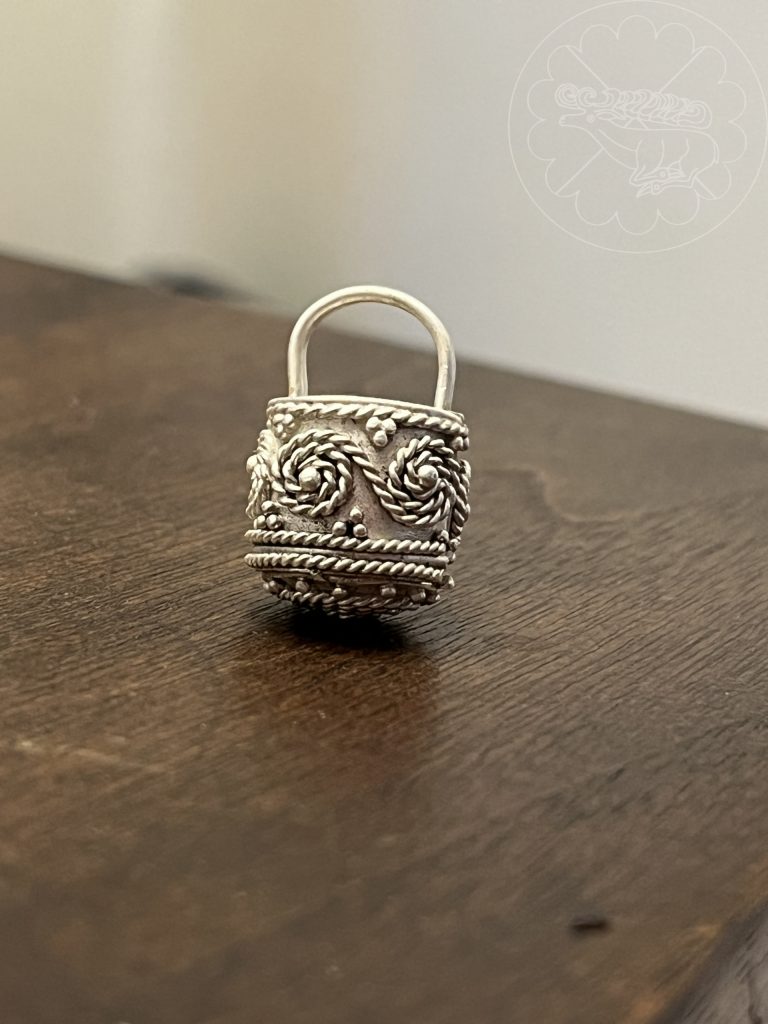
#4
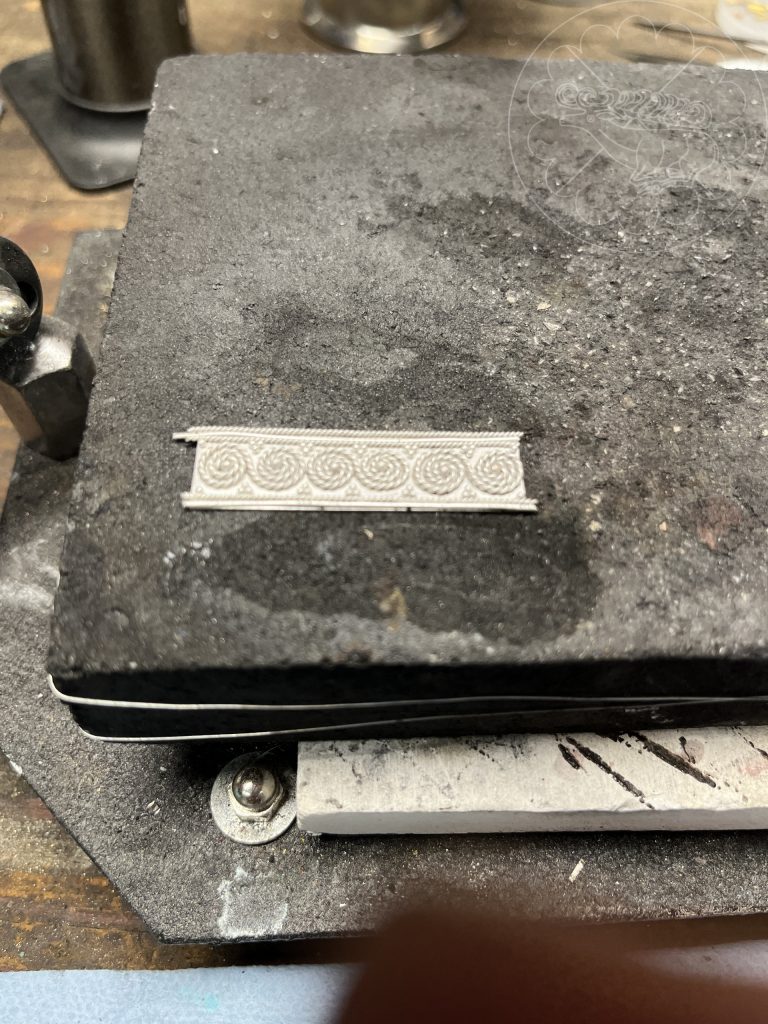
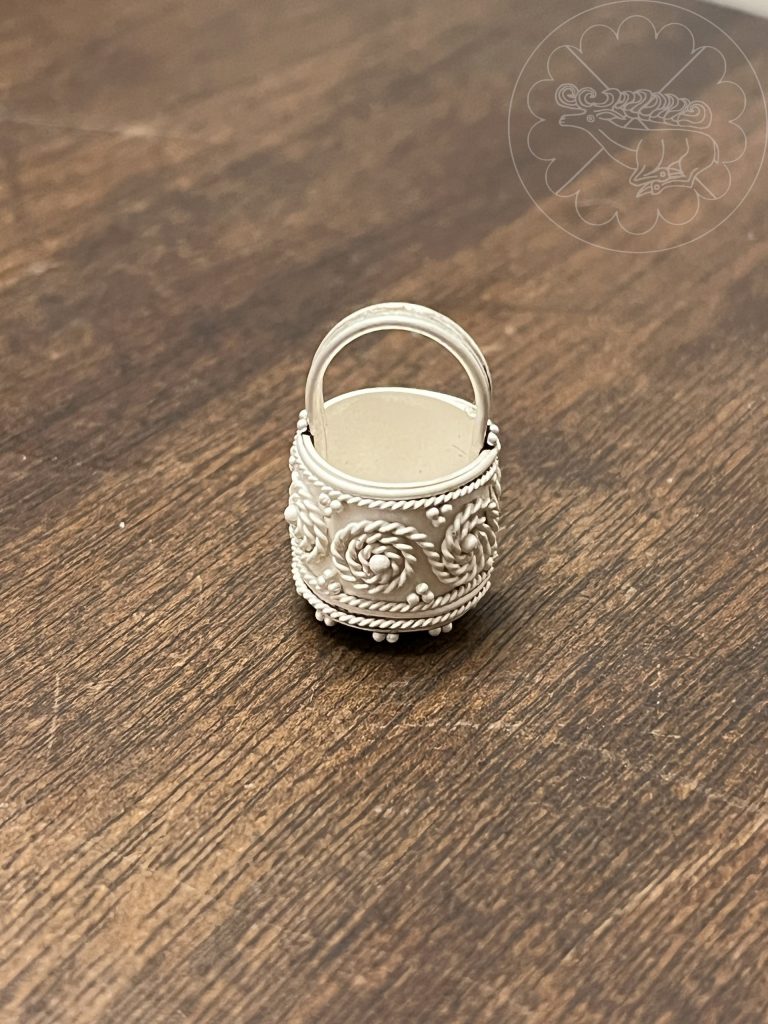
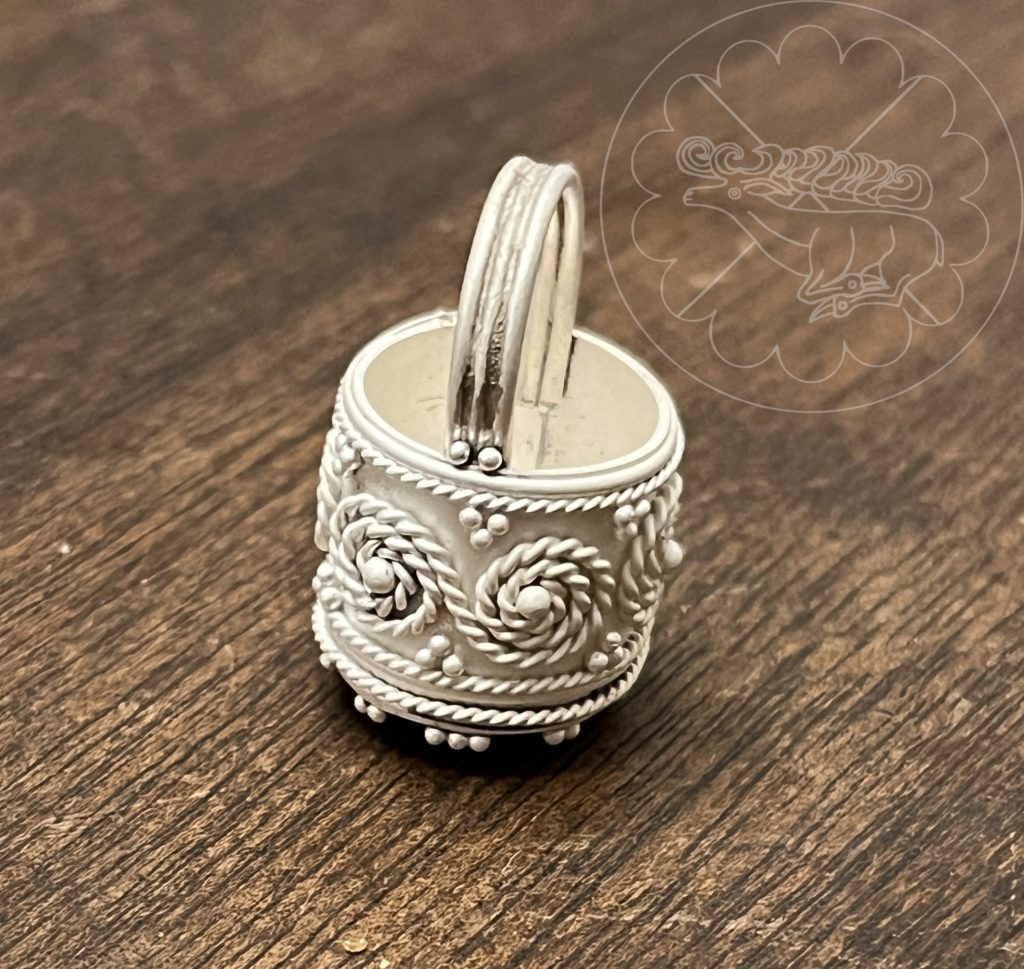
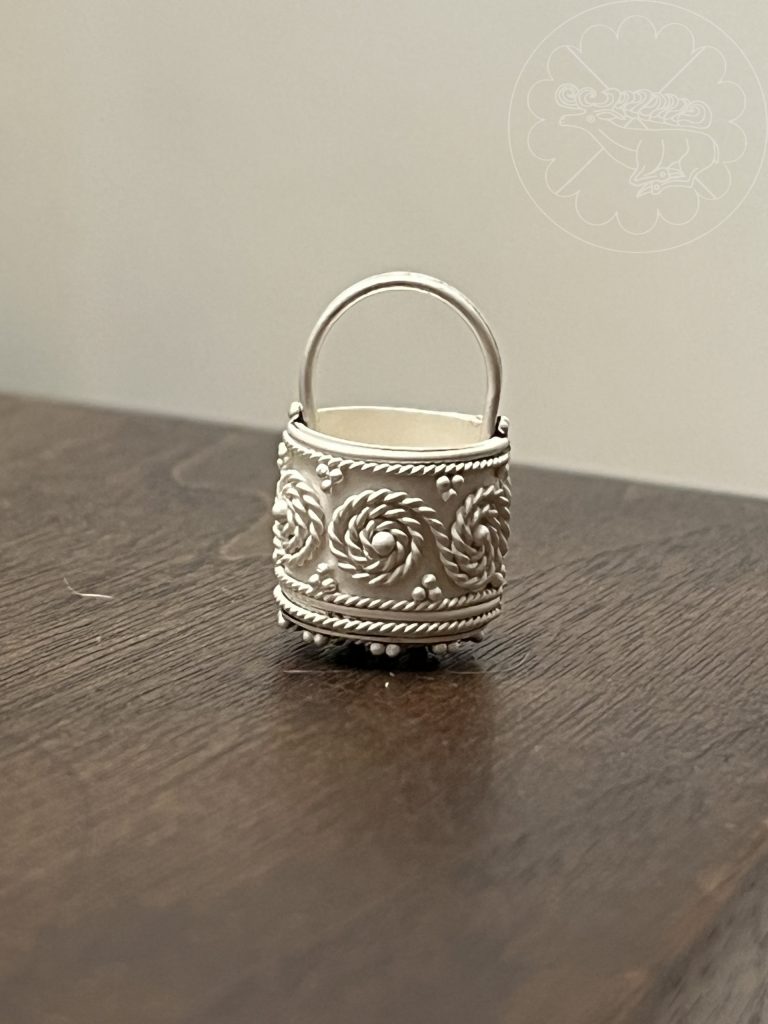
#5
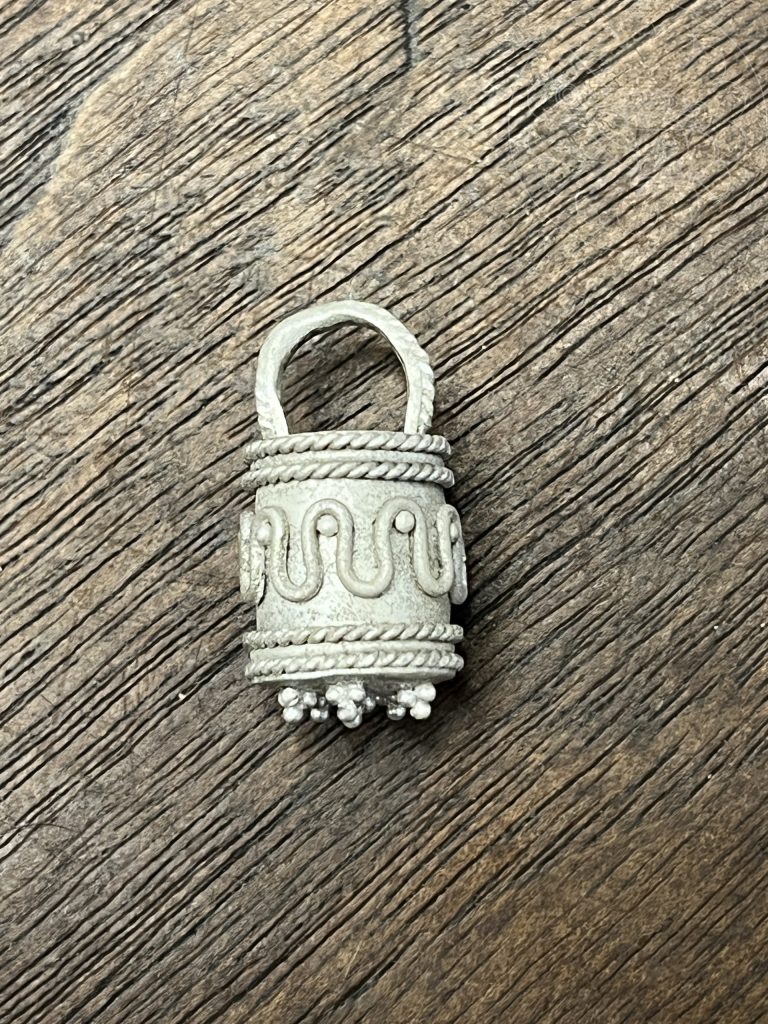
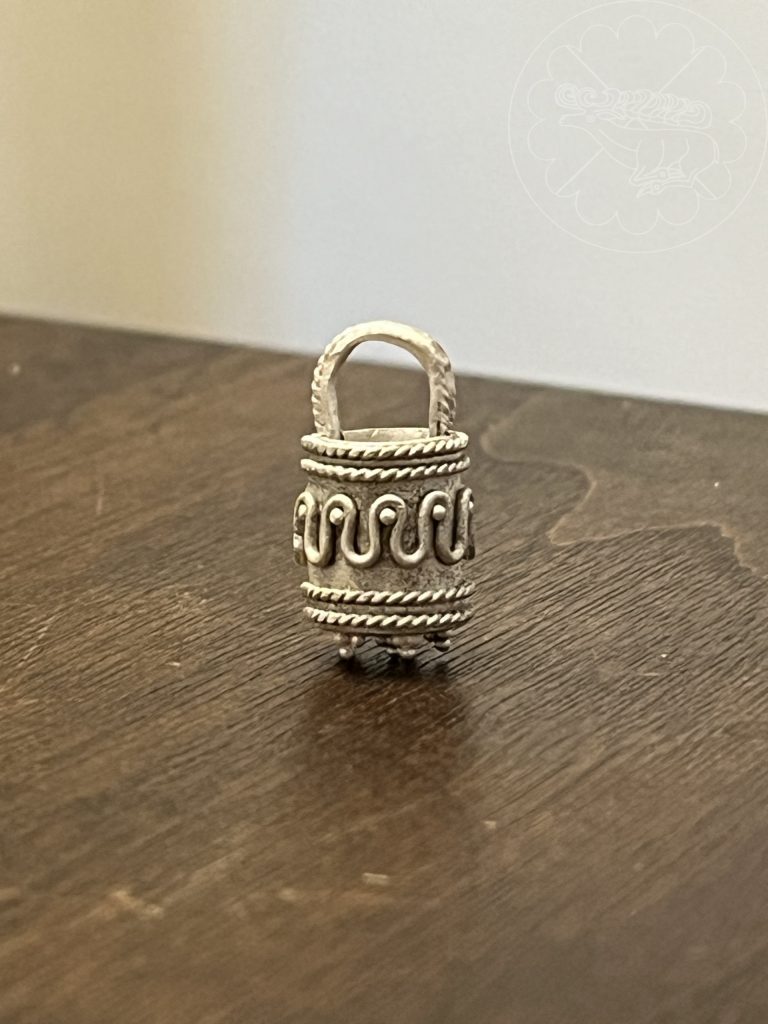
#6
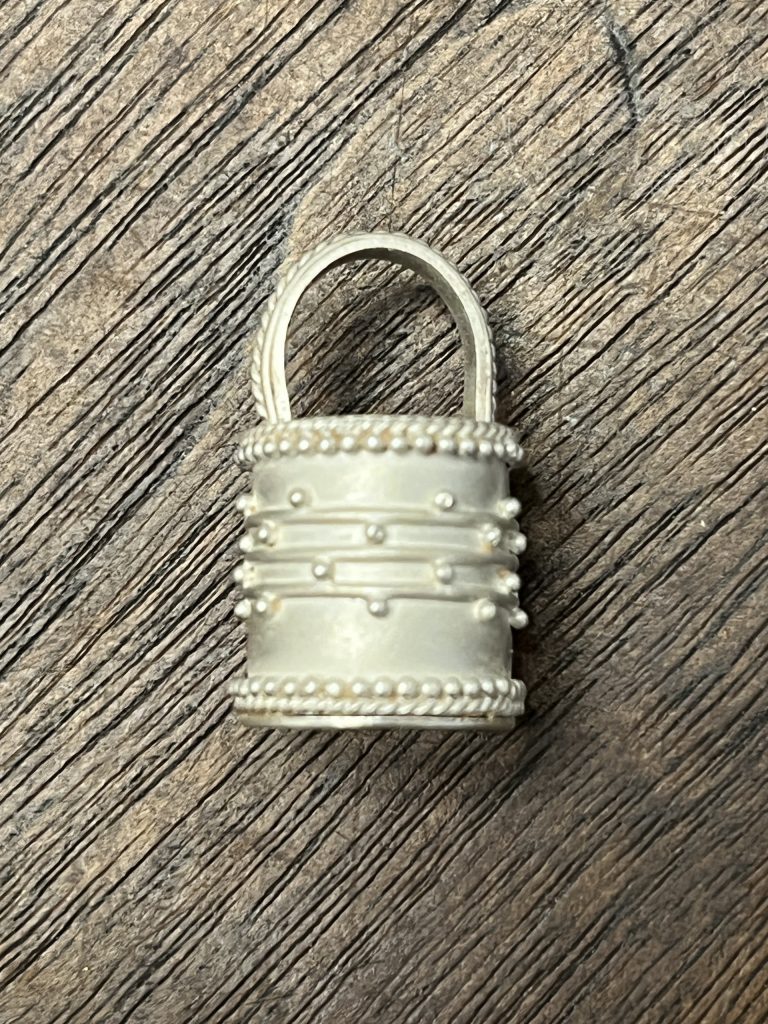
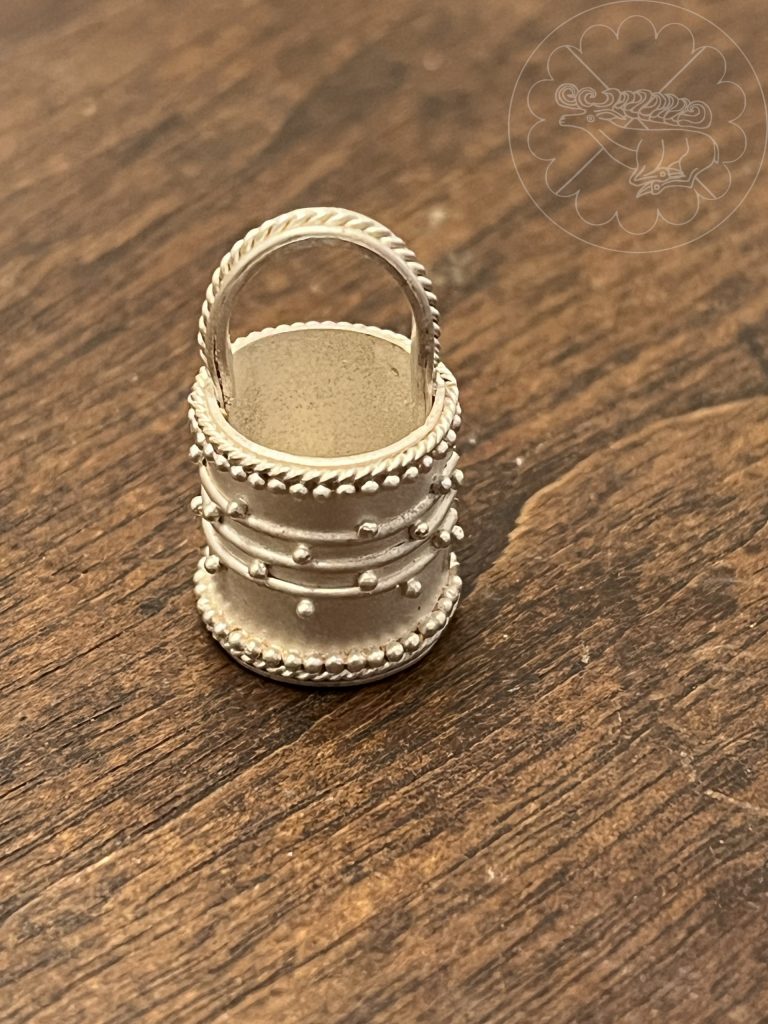
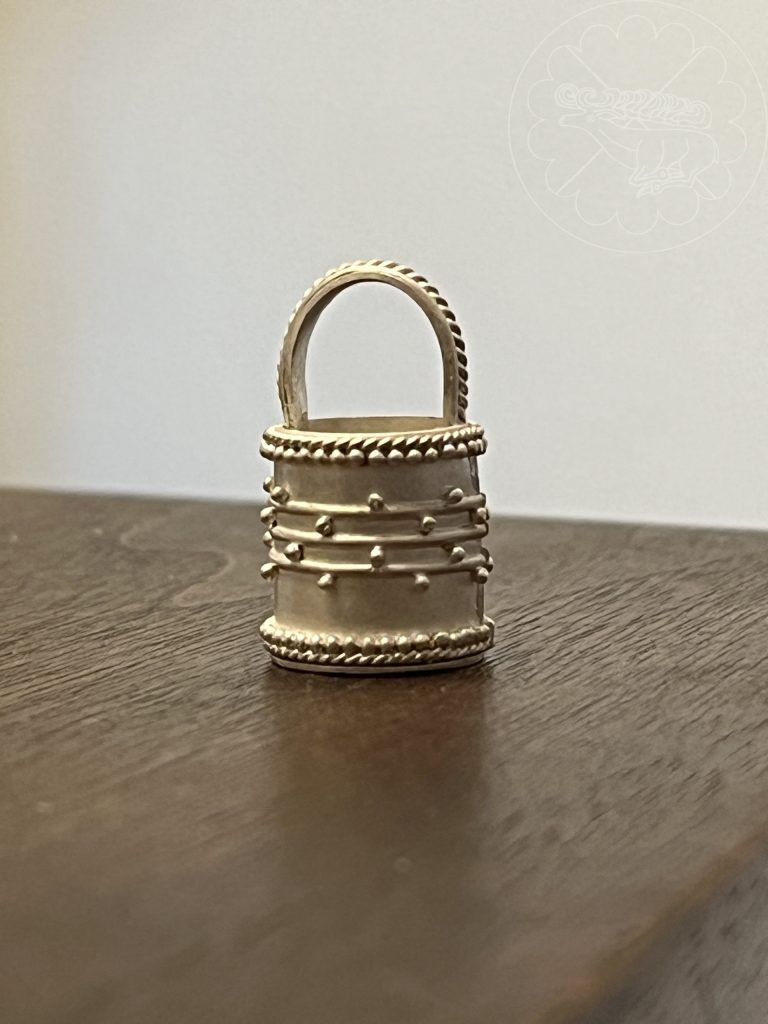
#7
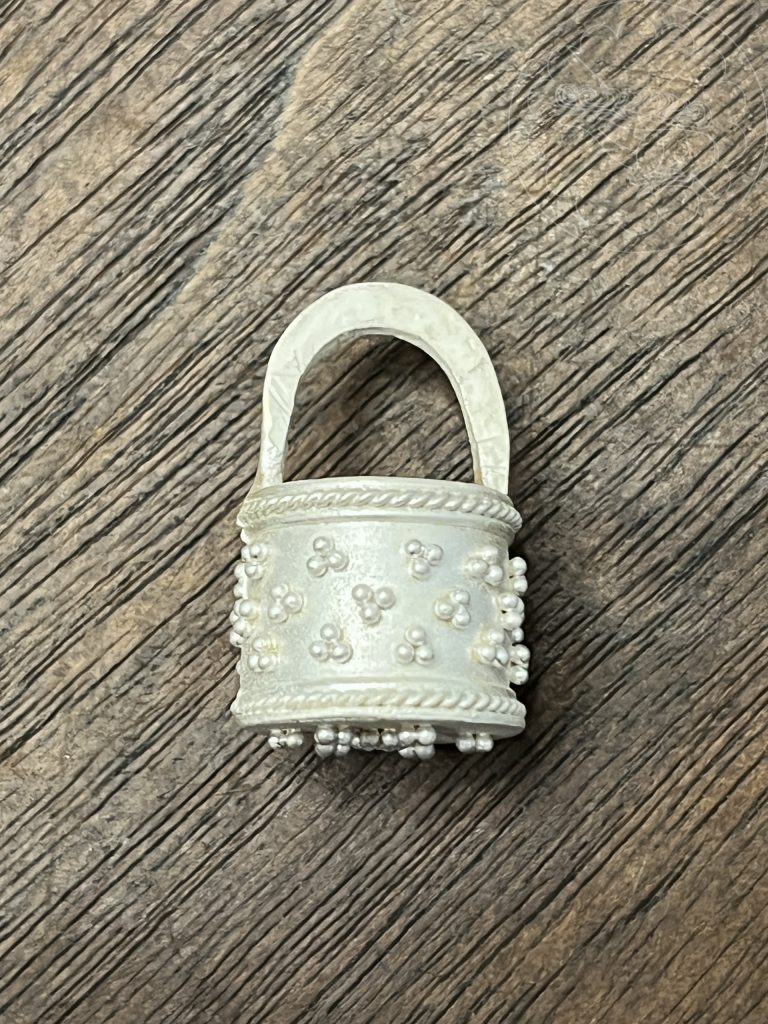
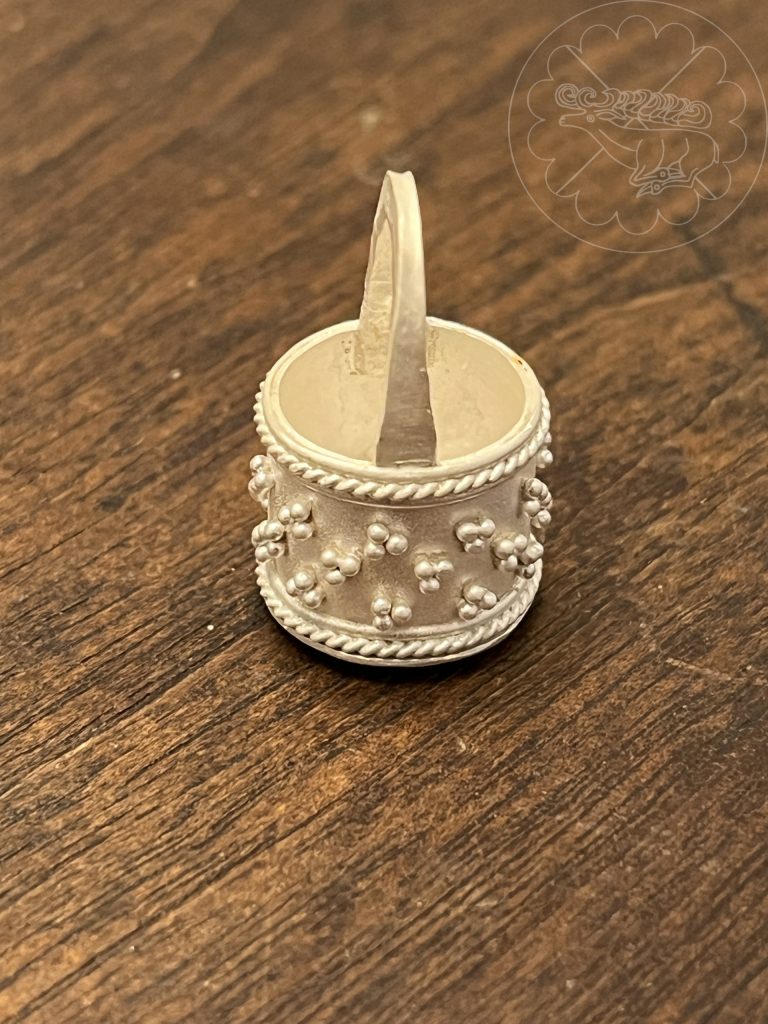
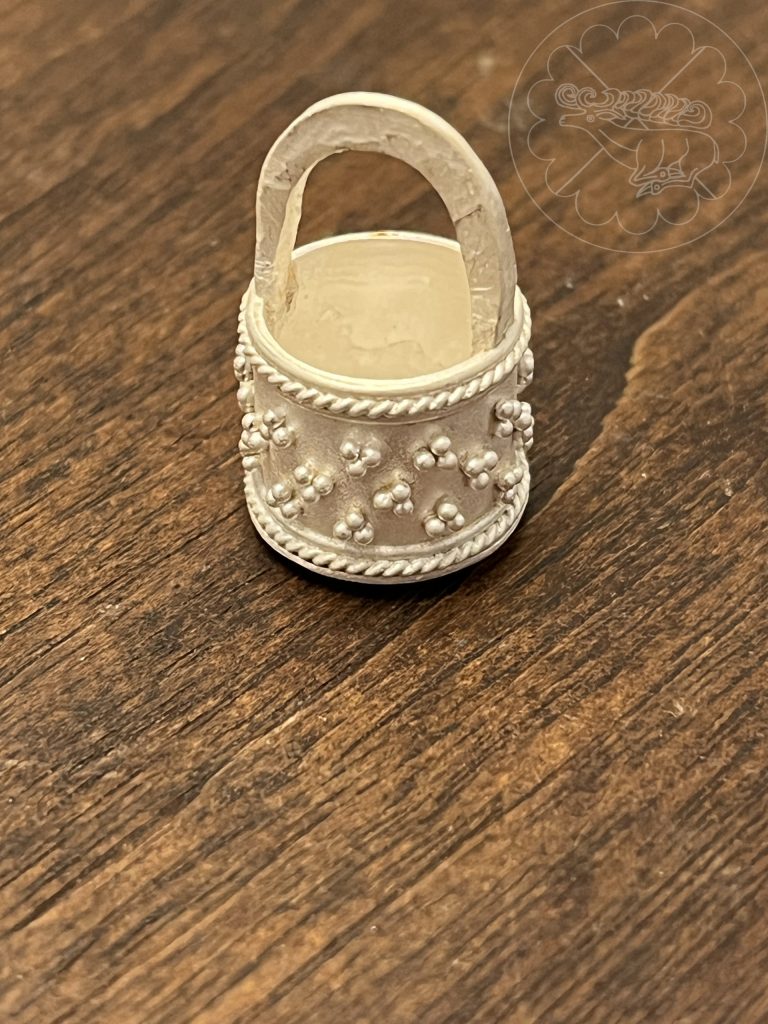
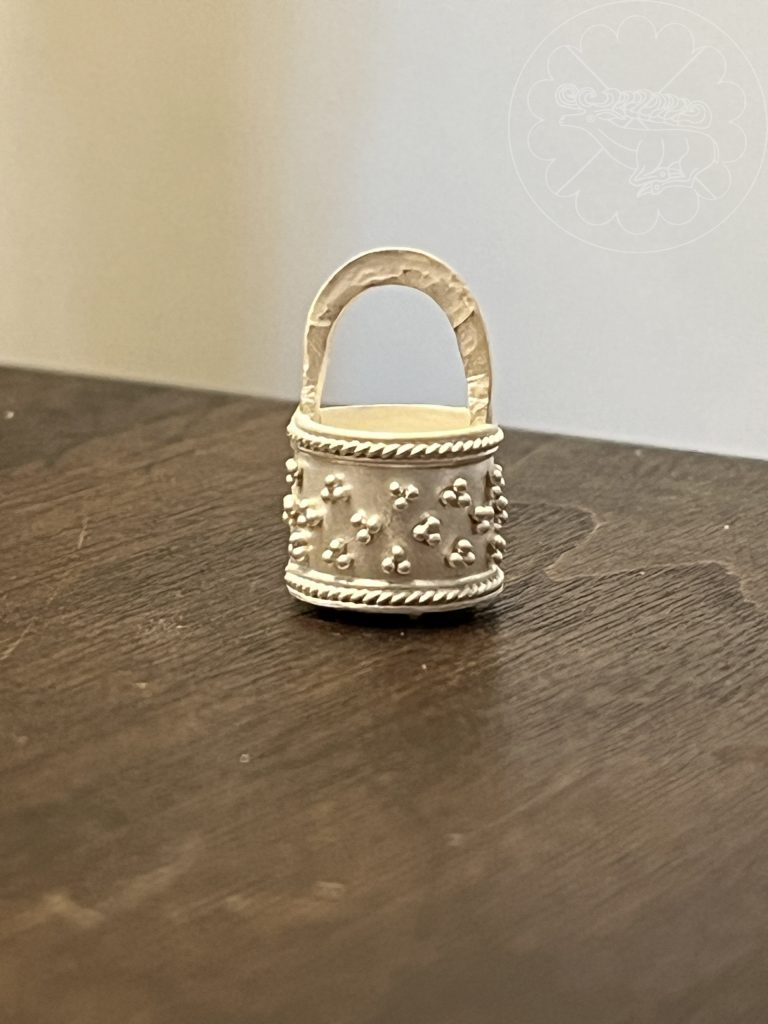
#8
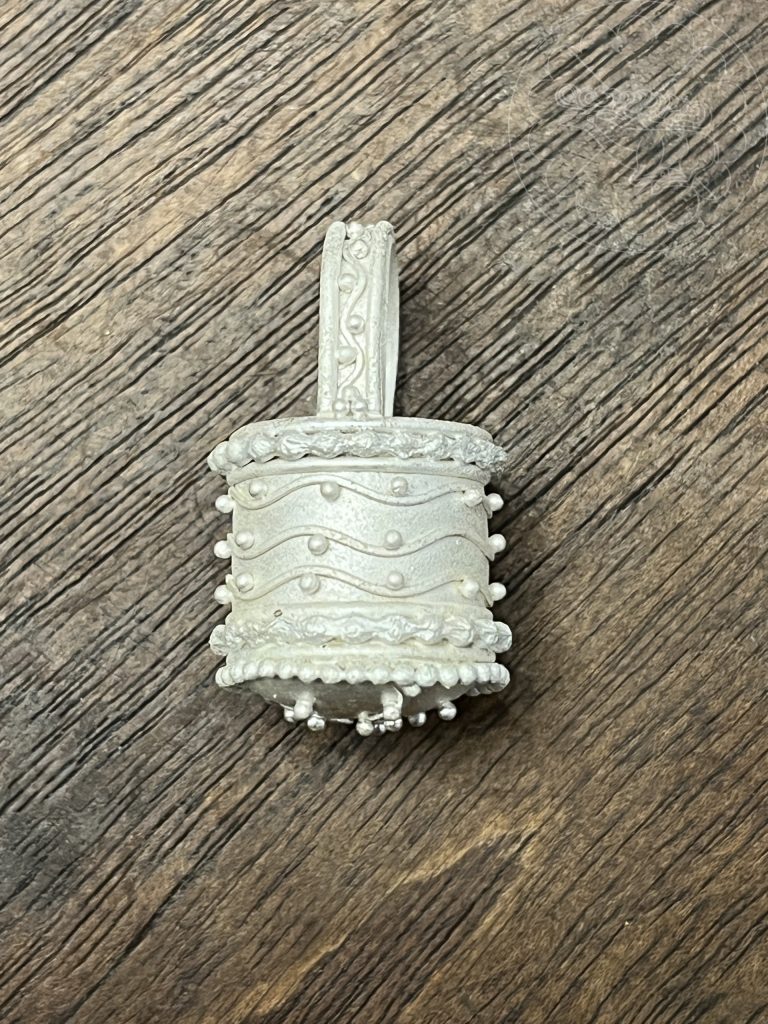
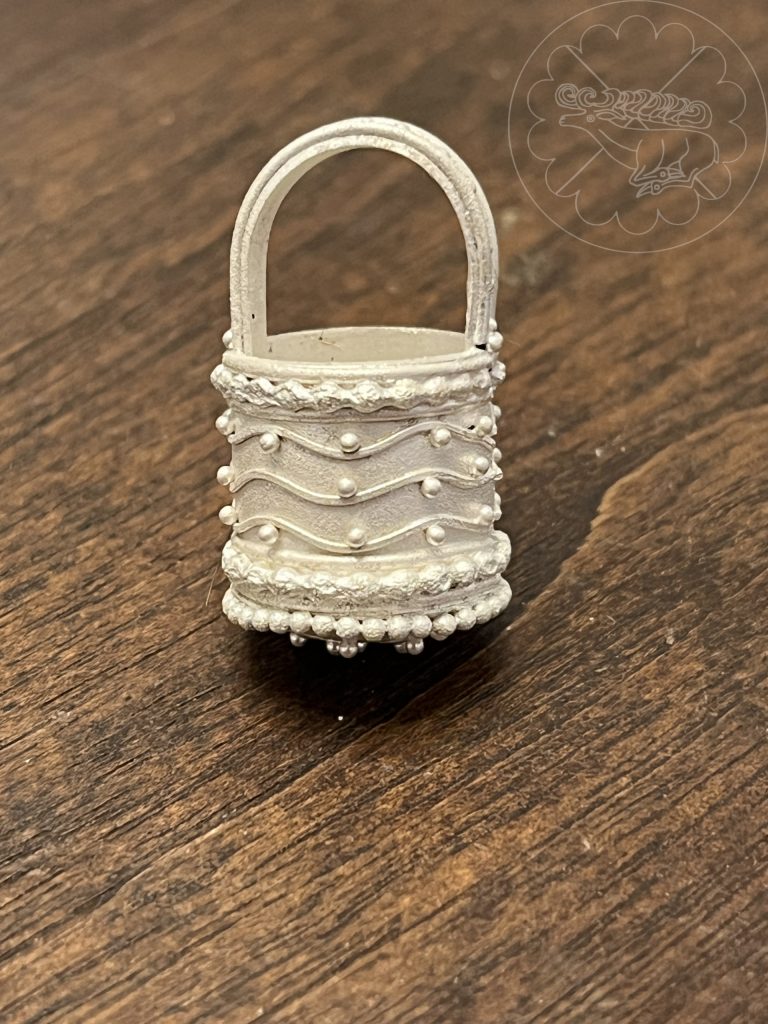
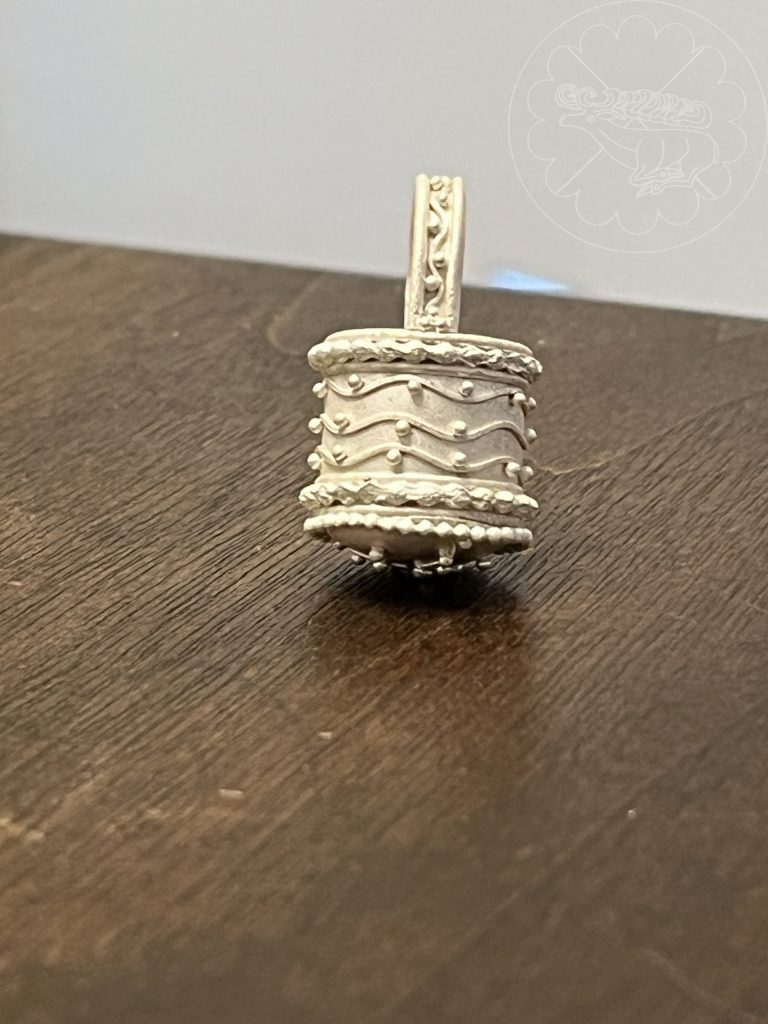
#9
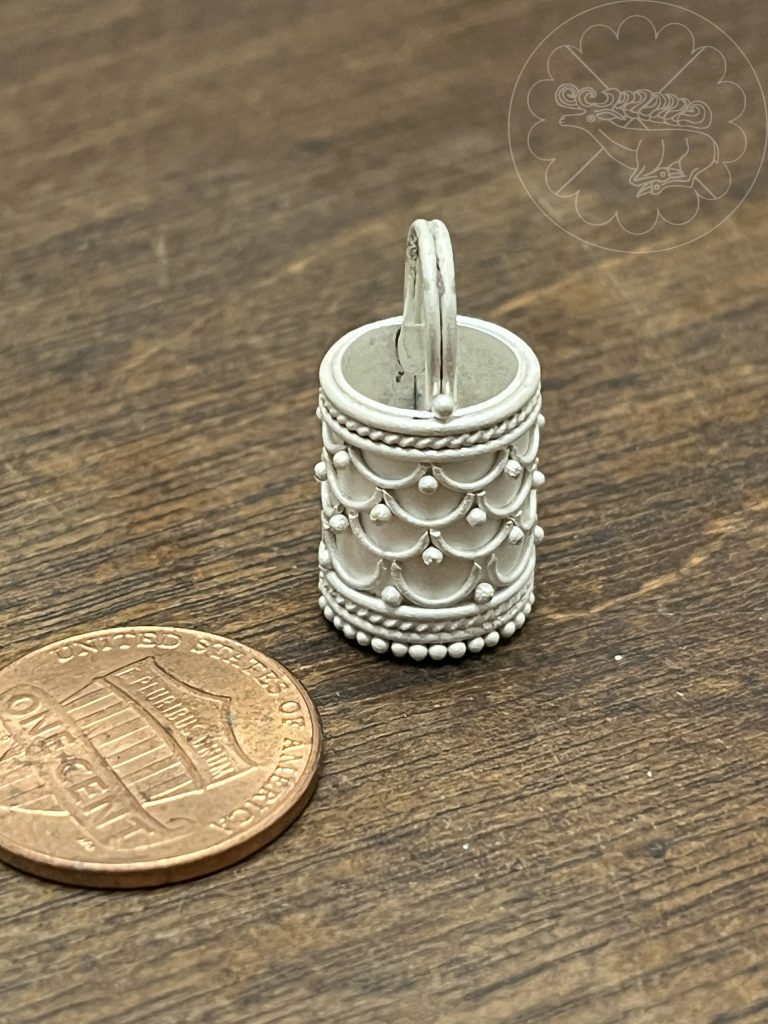
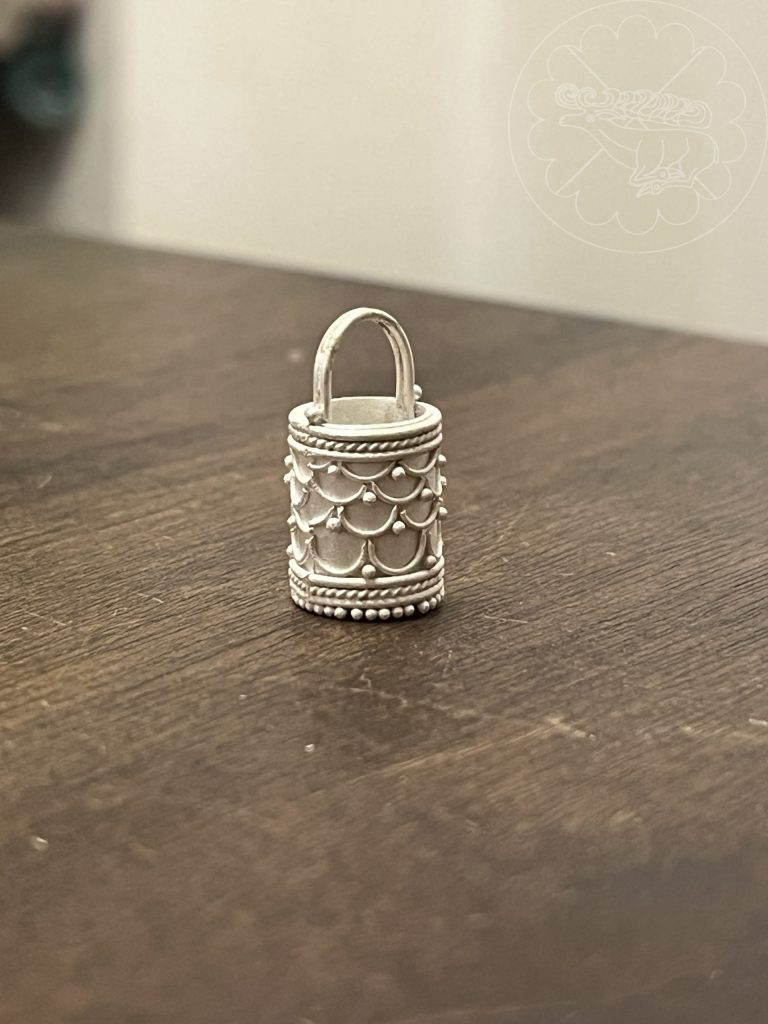
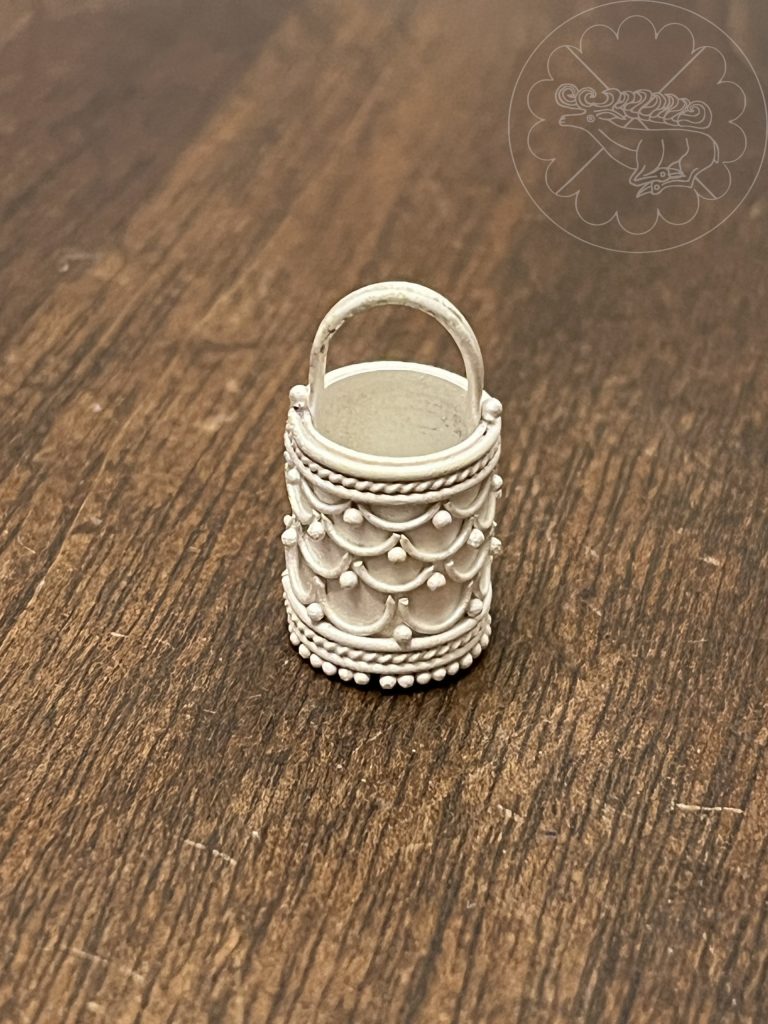
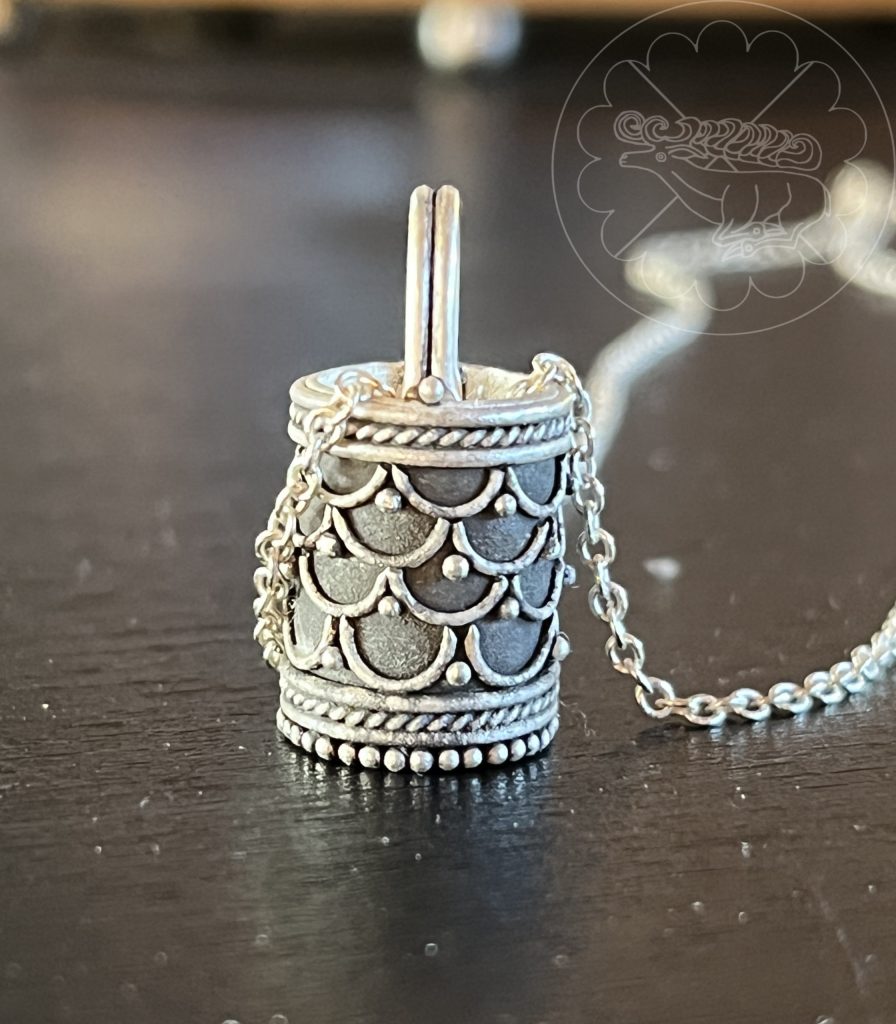
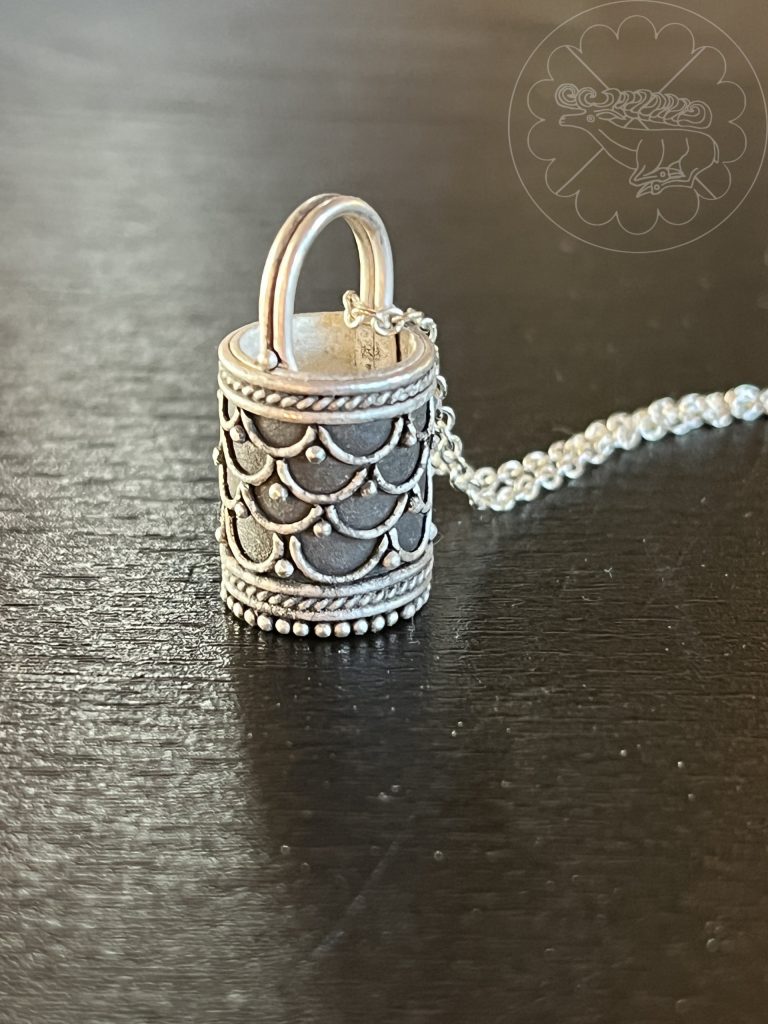
#10
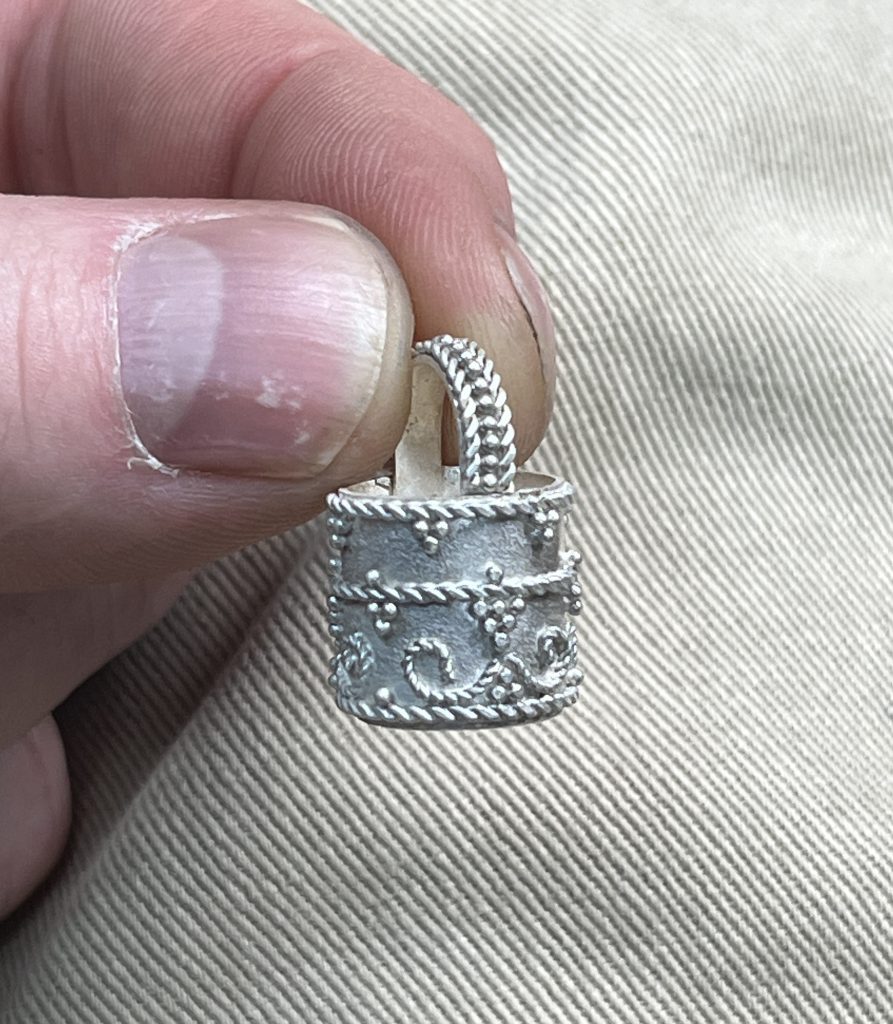
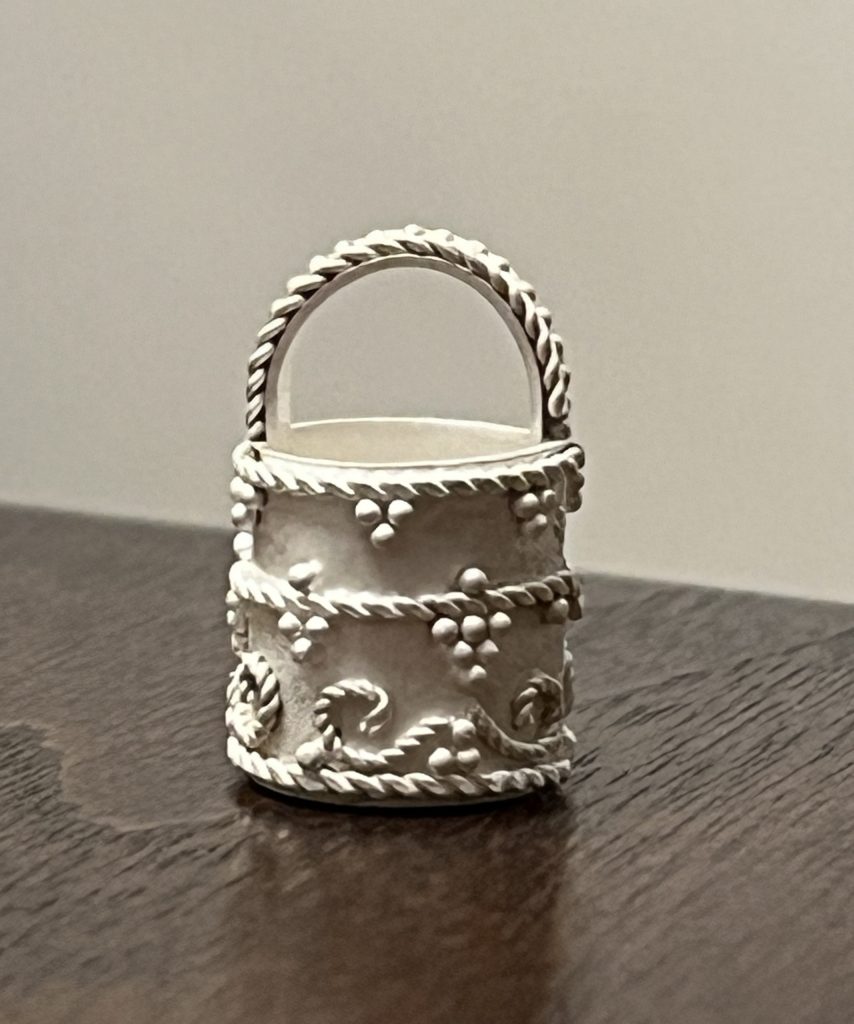
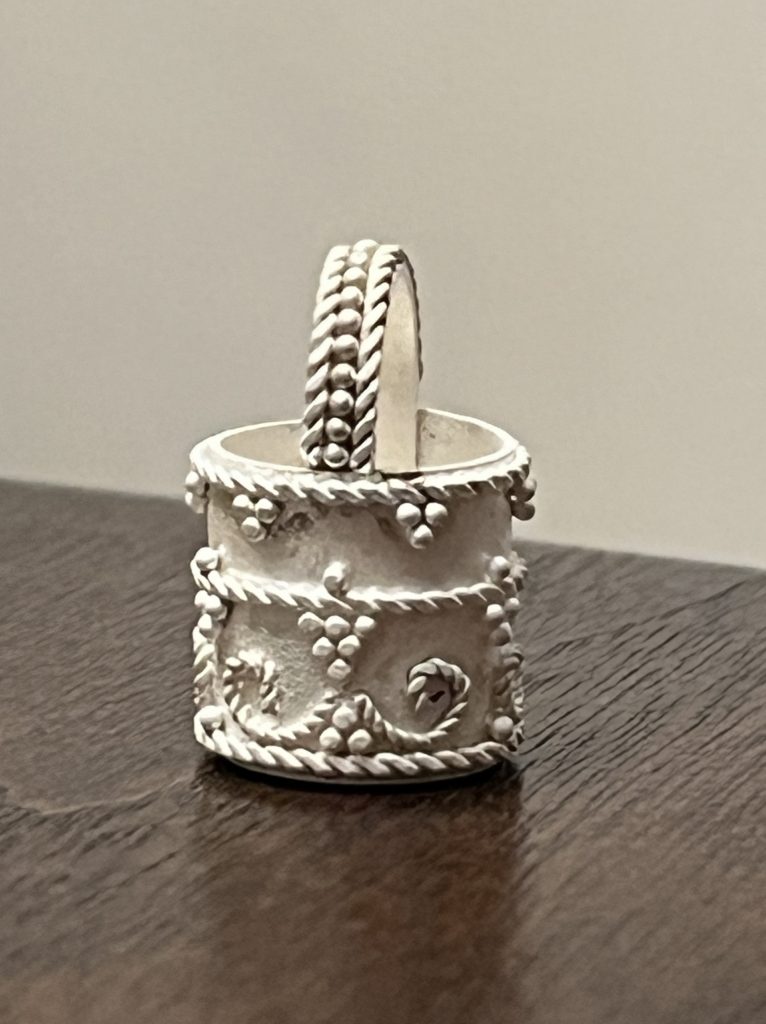
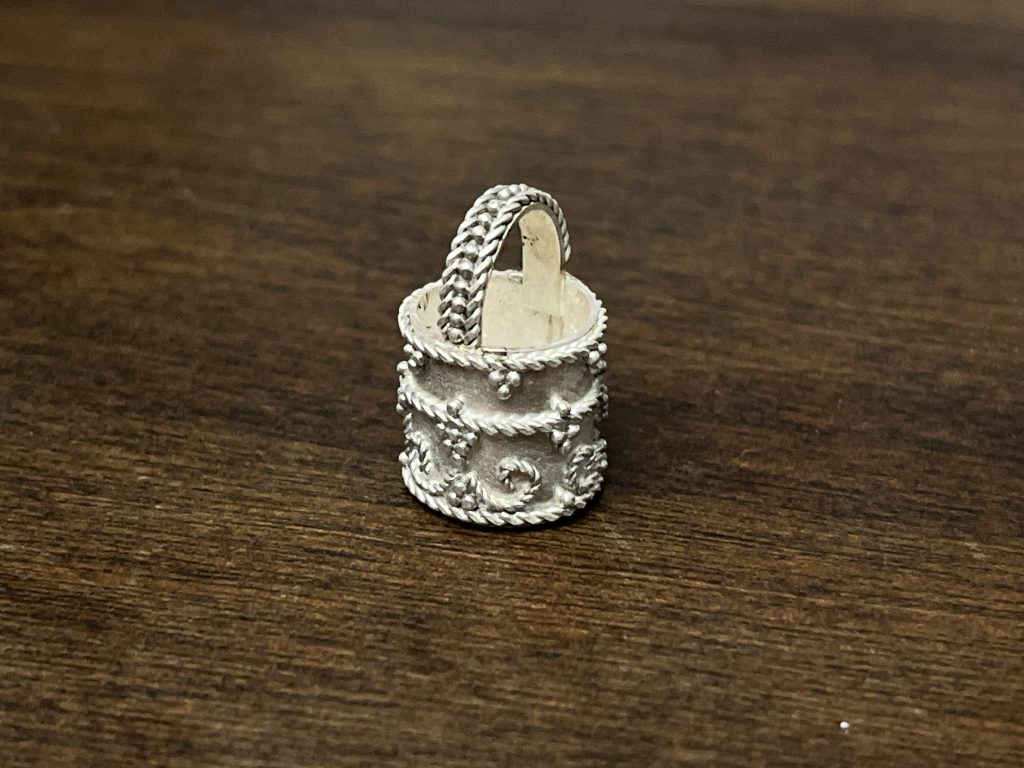
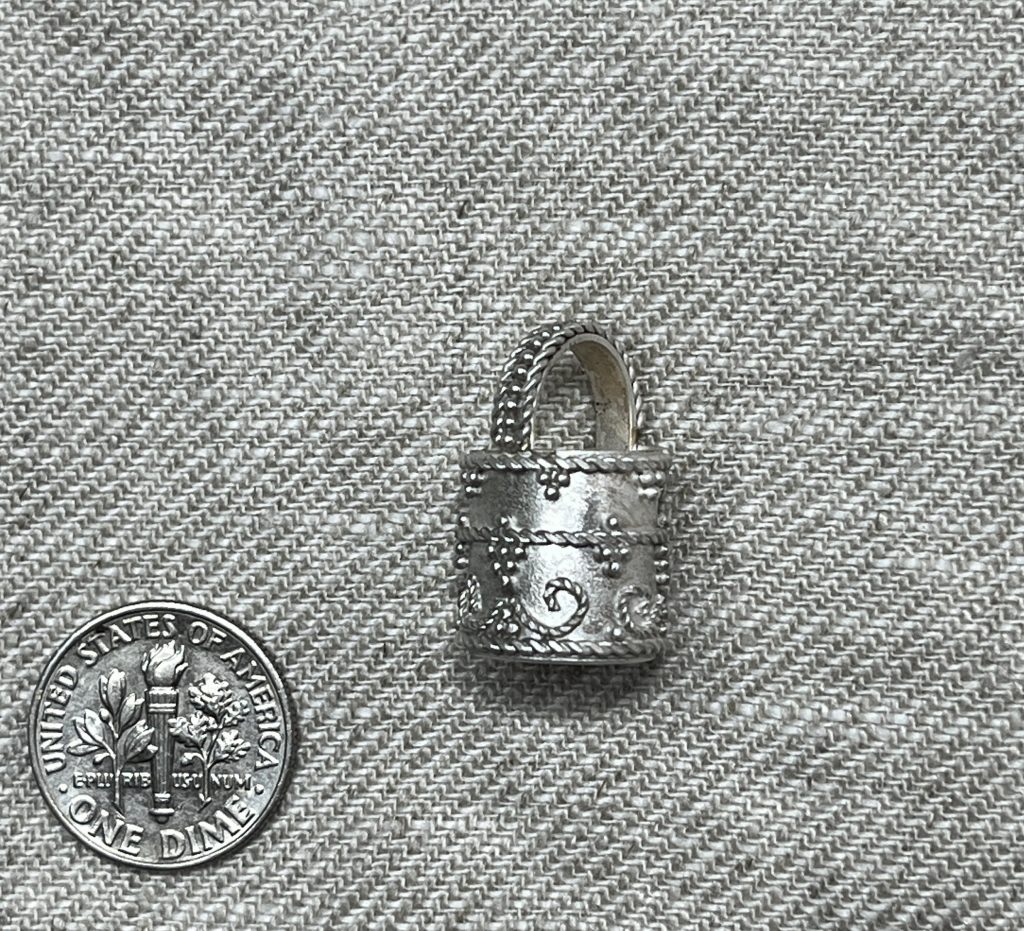
And here’s a selection of the extant pieces that my works were inspired by, and some others that I may still make.
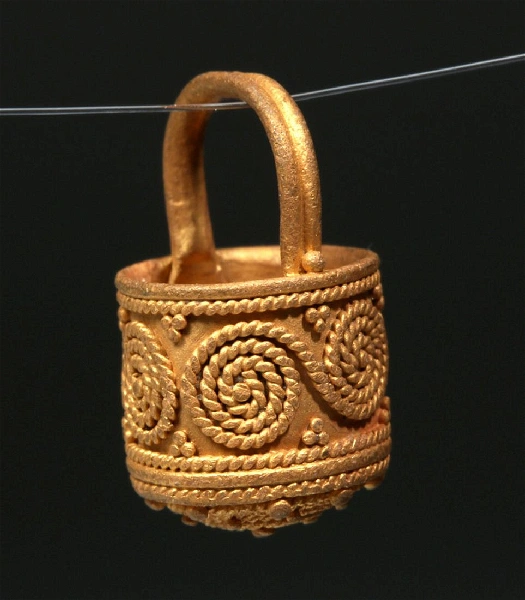
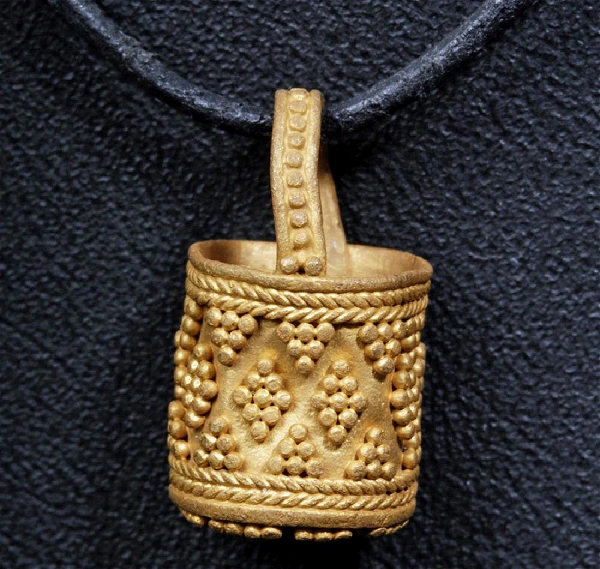
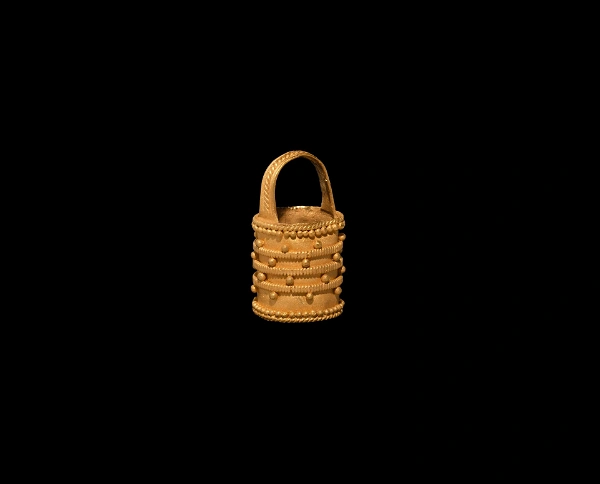
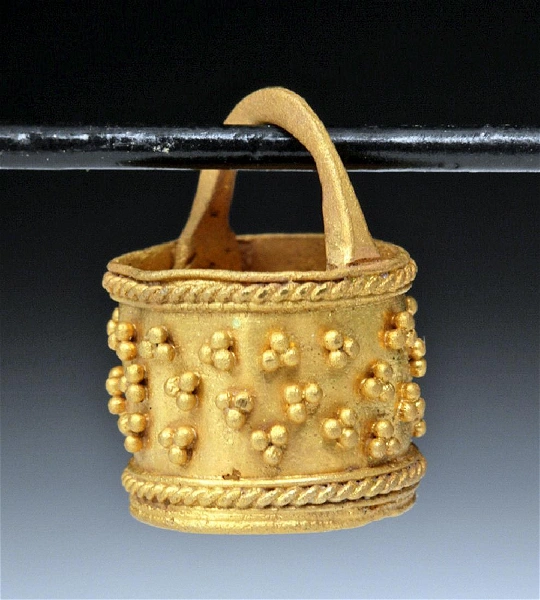
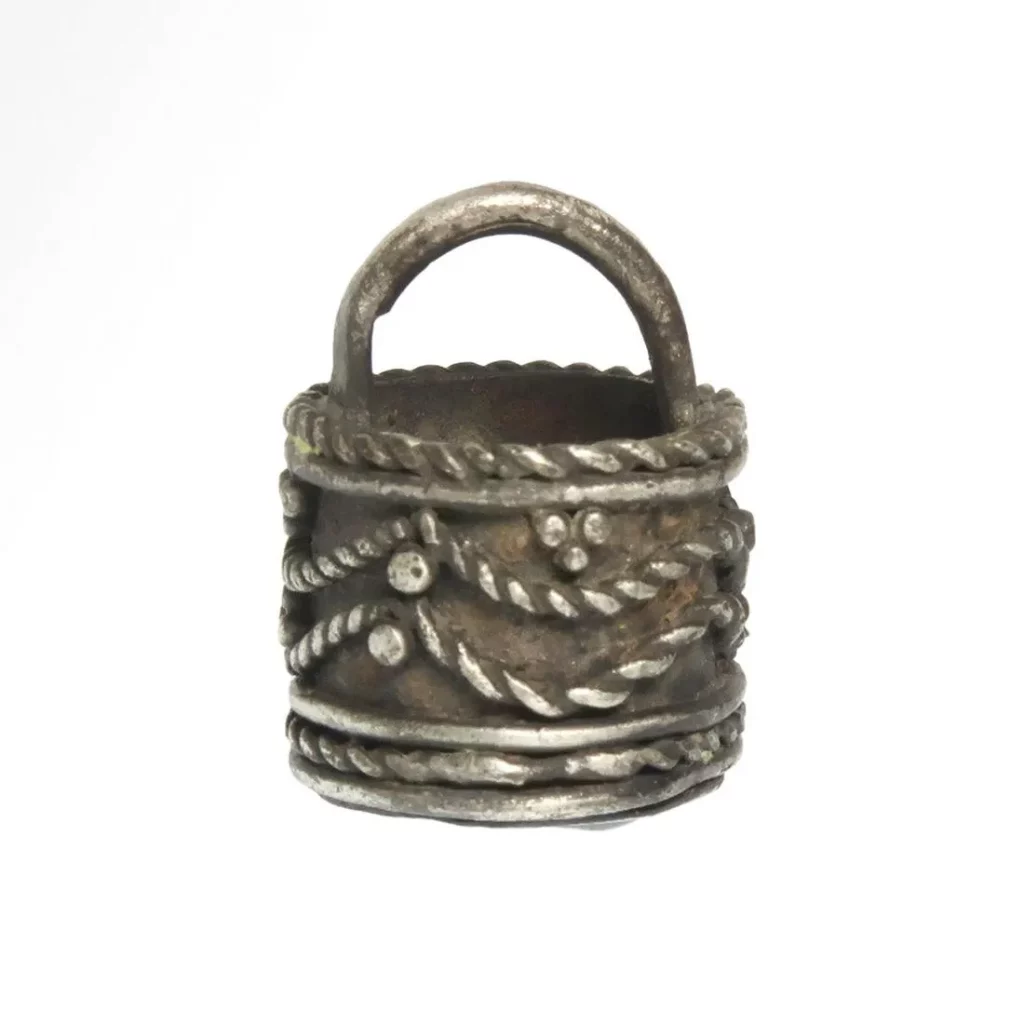
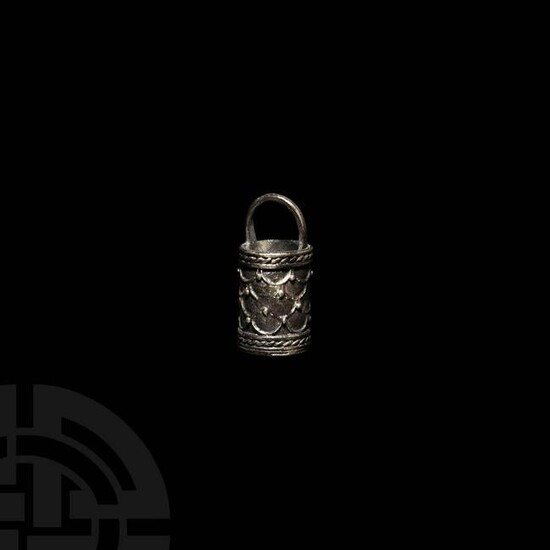
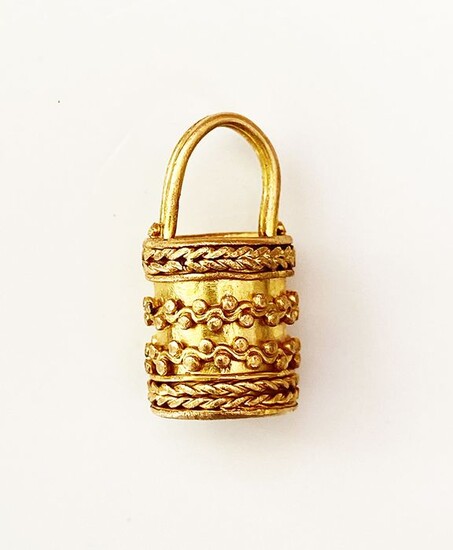
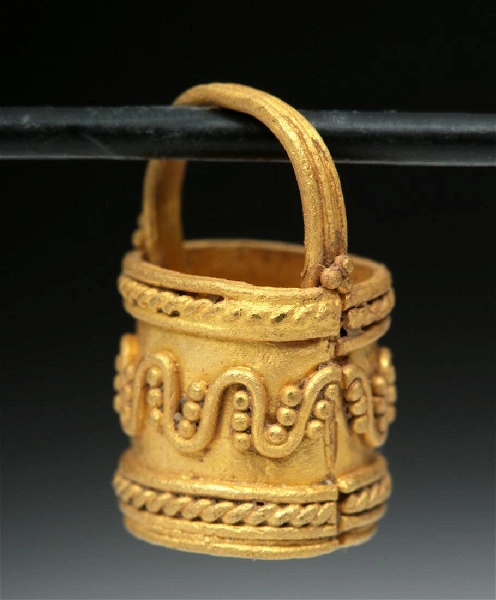
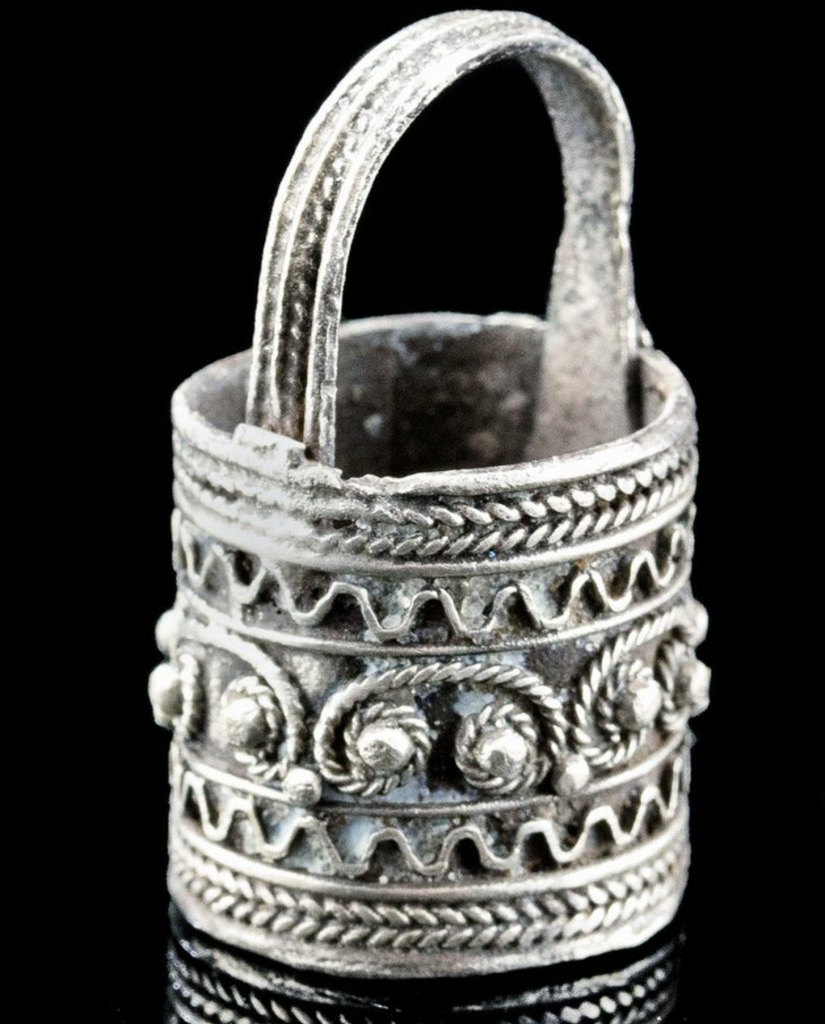
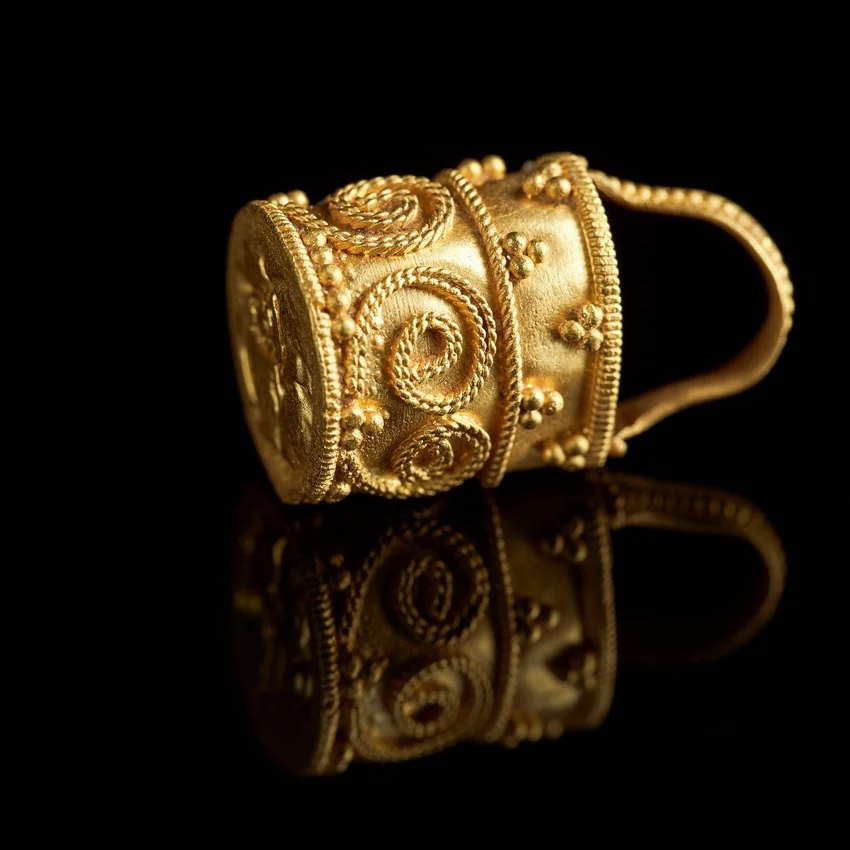
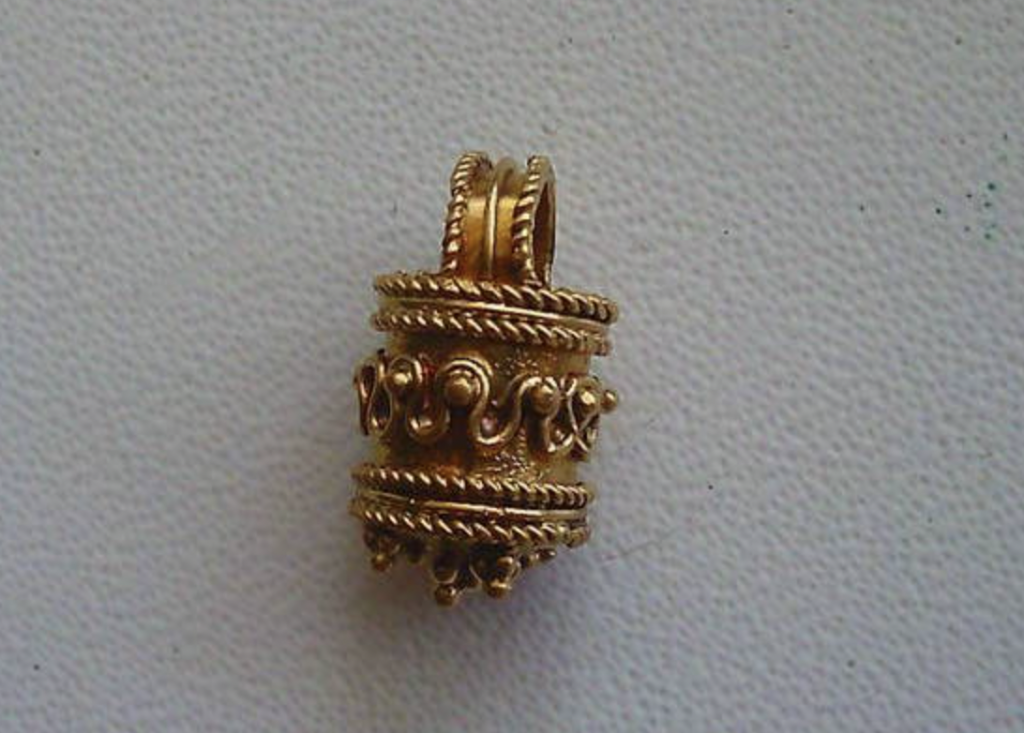
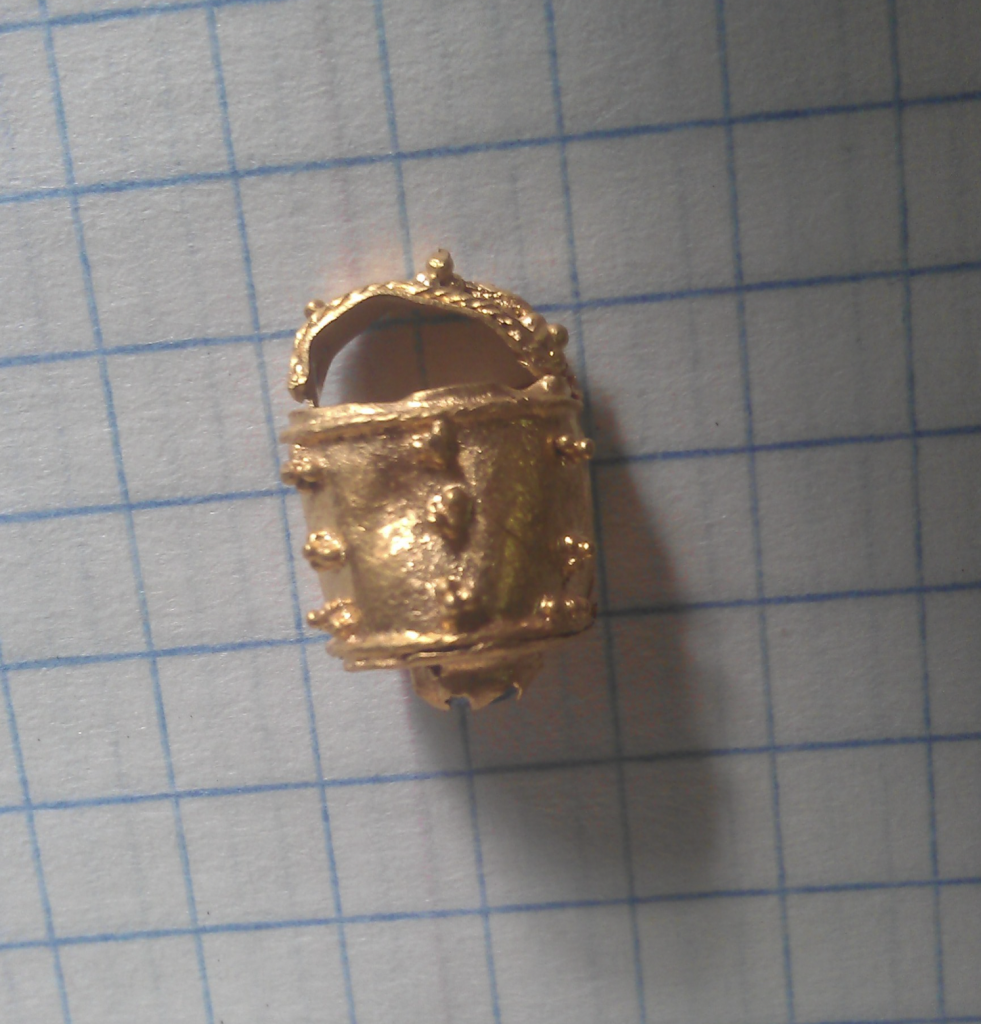
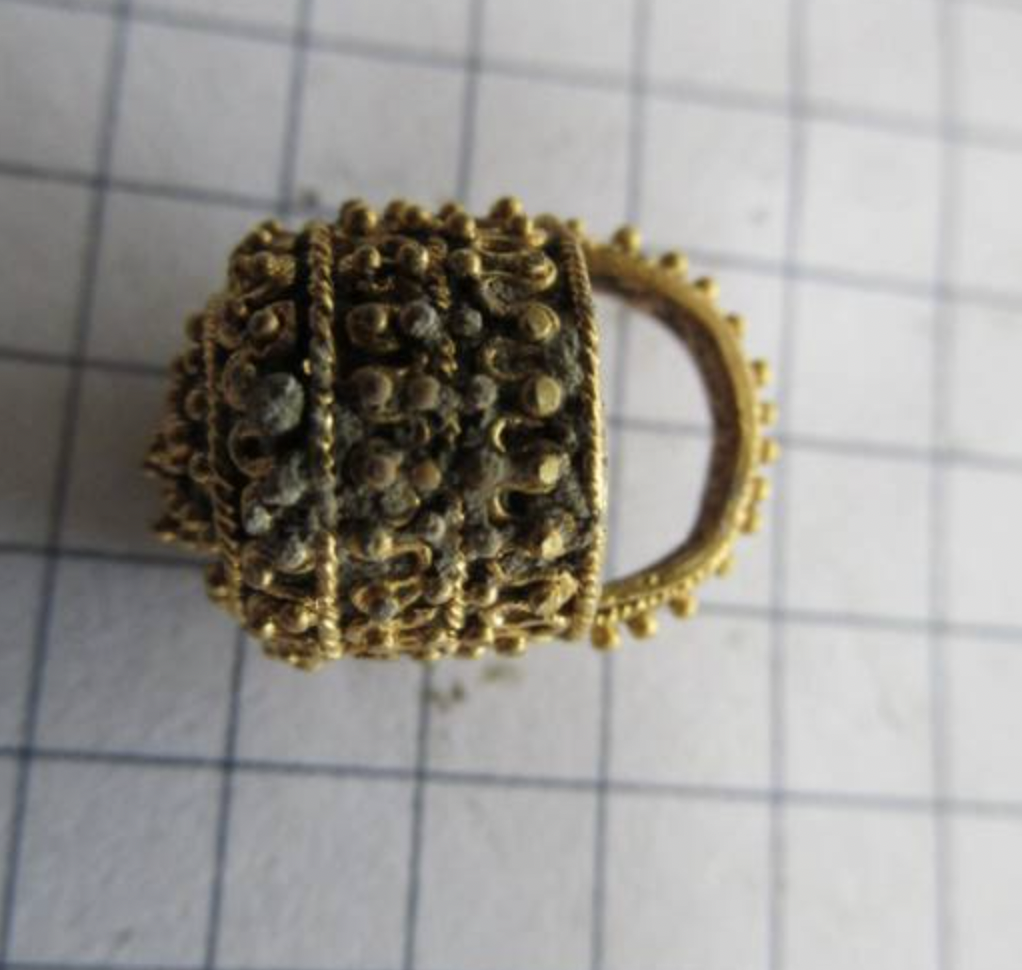
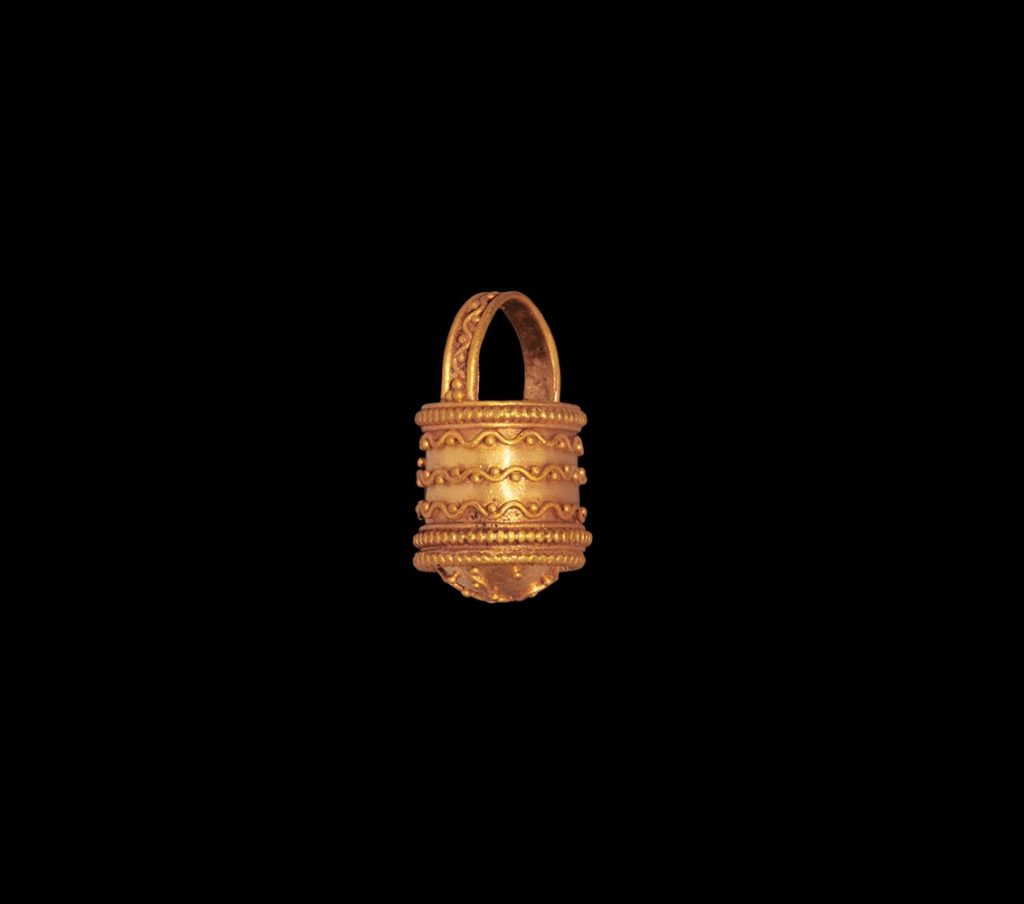
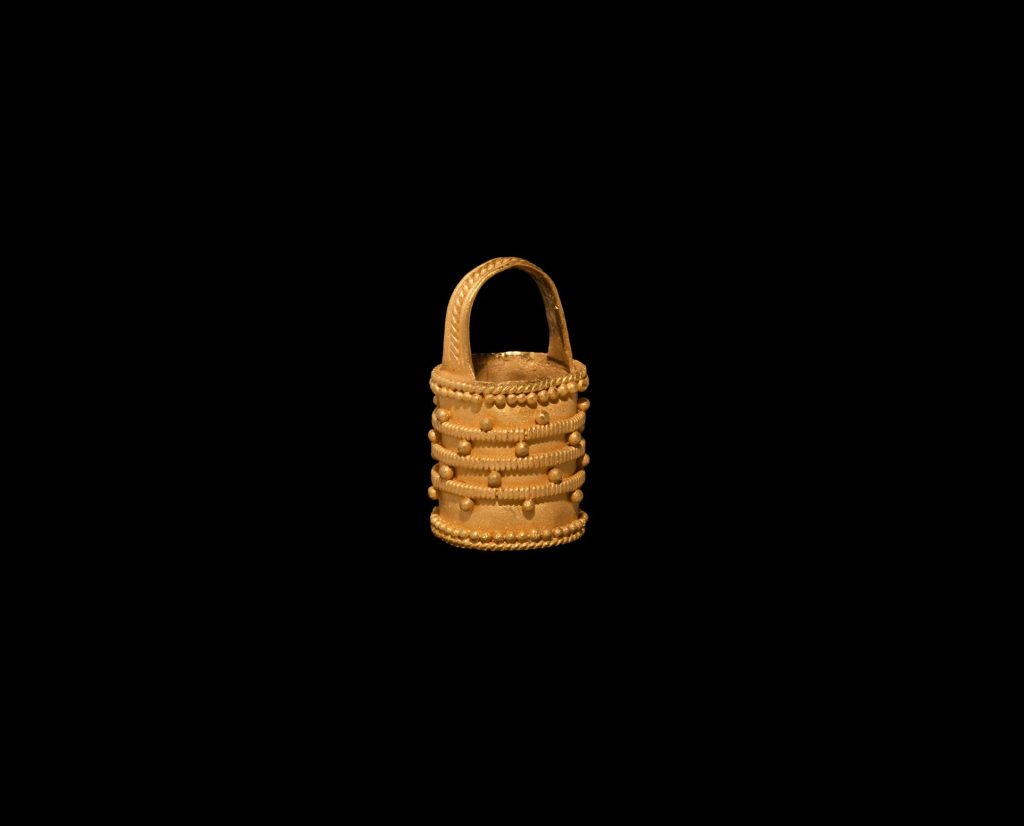
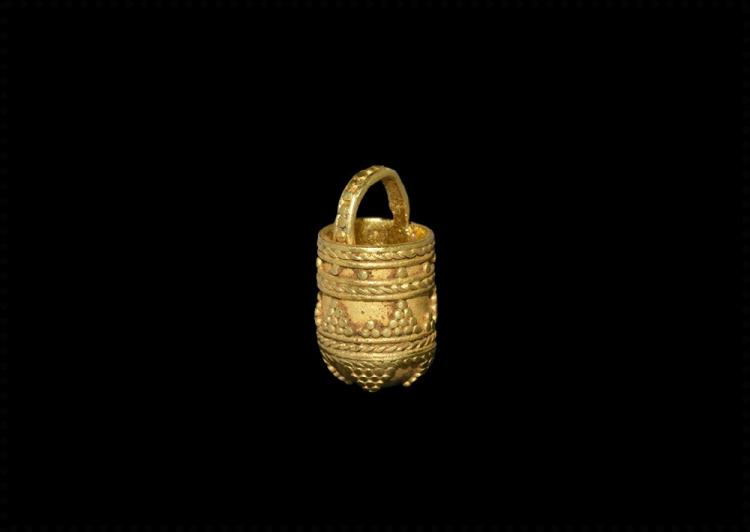

Pingback: Laurel & Pelican Medallion with Granulation & Filigree – Monomakh.com